In October 2011, I visited the Peruvian Amazon again, exploring
and documenting dwarf cichlid habitats and their fishes
( among other things ).
From the jungle capital Iquitos, I carried out several expeditions to
examine different
biotopes, fish and their habitats.
This year, I went alone again, with local friends/fishermen accompanying me on the expeditions.
The first of the expeditions in 2011 brought me to the drainages
of the Río Tahuayo and the Río Tamshiyacu, primarily to learn more about the
Apistogramma panduro, its habitats and its different forms.
I have kept and bred two of the three known forms of Apistogramma panduro:
The "normal" form "A 183",
and the form "A 184", with cross-bands in the caudal fin. The latter was said to be found in
the Río Tamshiyacu-drainage, only.
The third form, "A 185", equal to "A 184", but with an additional red marking in the very posterior part of
the dorsal fin, has almost never been seen in the hobby.
I had never seen any picture of a habitat for any of the Apistogramma panduro forms.
The main focuses on this expedition were therefore:
- to find out more about the distribution of the "A 183" and "A 184"
- to document their habitats
- to find and confirm the existence of the "A 185" form, if possible.
In Iquitos, Peru
In October 2011, I was in Iquitos, Peru, again.
This map shows where it's located, in the Peruvian Amazon:
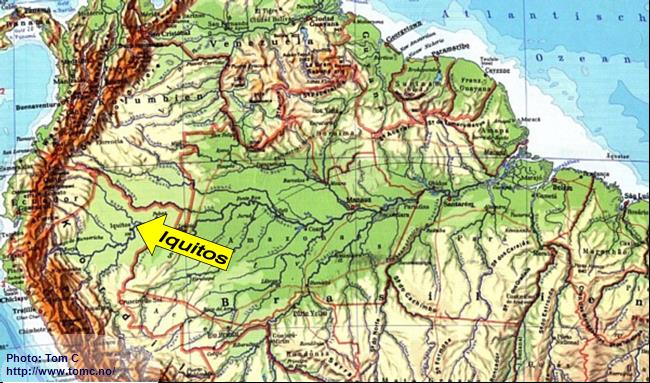
The actual area for this expedition:
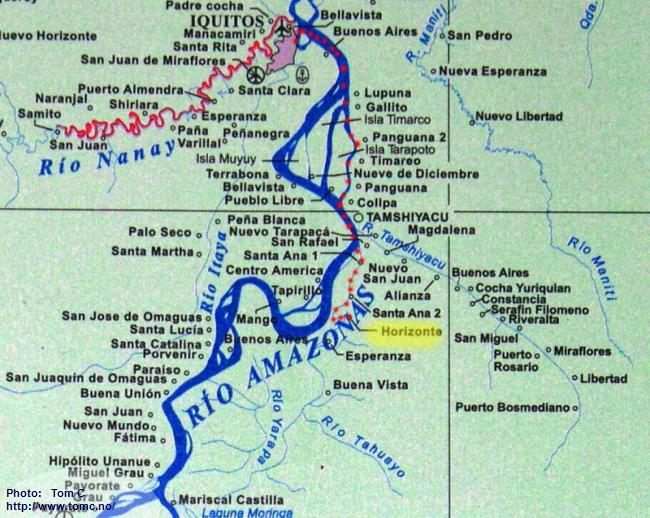
I made deal with a local fisherman who knows a lot of
Apistogramma, and who has accompanied me on many other
expeditions the latest 7 years, to accompany me on this expedition.
We planned to go from Iquitos by a ferry (following the
red dots) to the Río Tahuayo,
and to the small village Horizonte (Marked
yellow on
the map).
There "my" fisherman knows a guy who could show us where to search for the
Apistogramma panduro.
After collecting the actual fish, and documented the habitat, we planned to find a small boat, and to go upstream
the Río Tamshiyacu, searching for
Apistogramma panduro there too.
In both areas we would of course ask the local people to tell us all they know about the
different forms
of
Apistogramma panduro...
The expedition
At 08:30 am we entered the boat which would bring us to the Río Tahuayo:
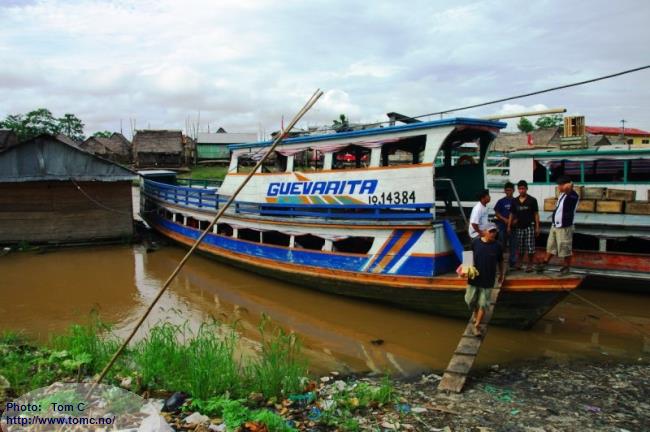
It would depart from the district of Iquitos called Belén, at Río Itaya:
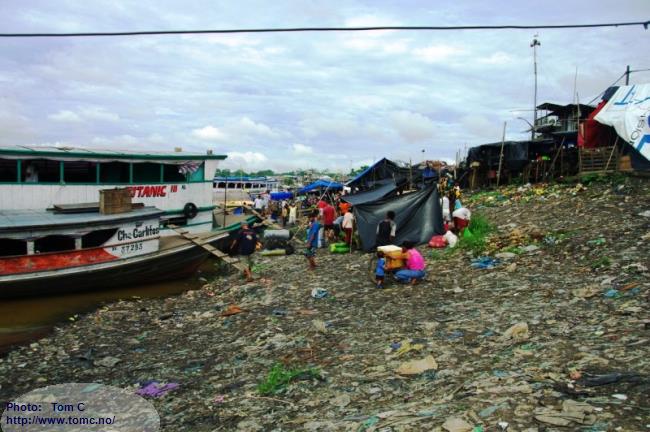


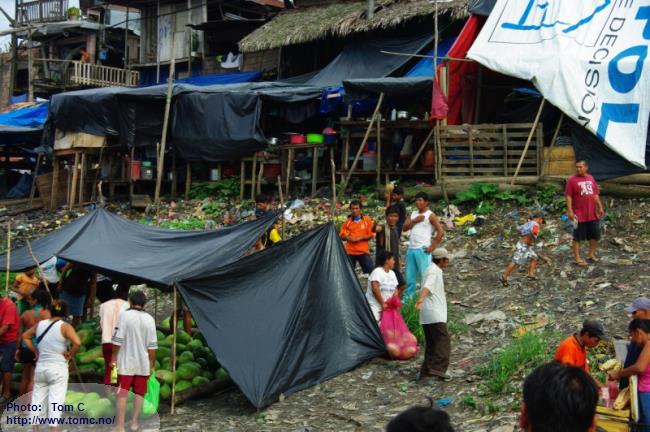

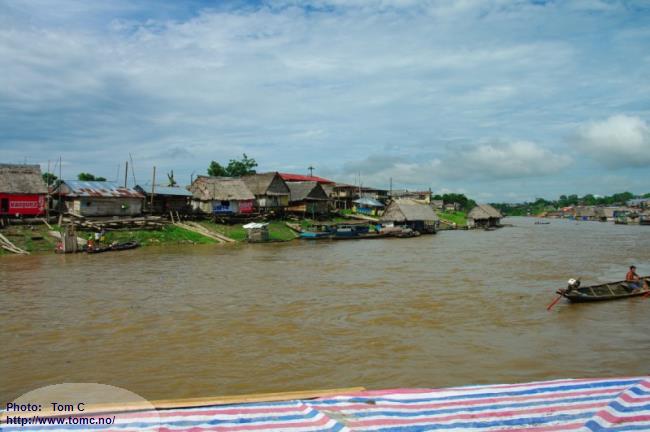
The departure was at 10:00 am.
Downstream the Río Itaya.....
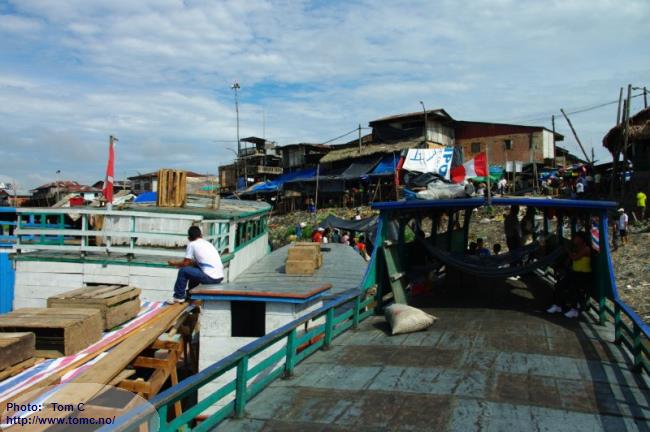
...and we entered the mighty Río Amazonas:
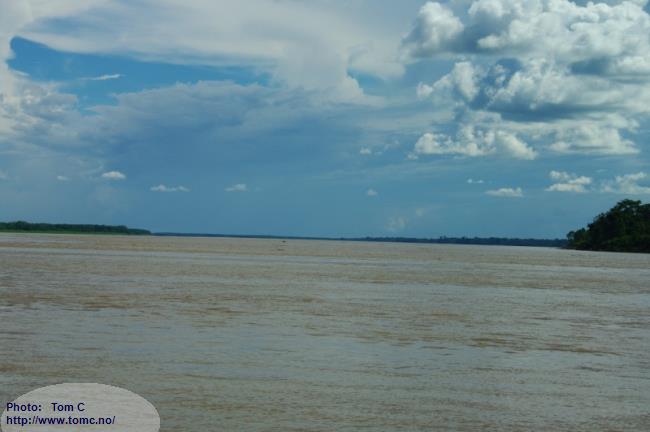
4 hours later, we passed the town of Tamshiyacu:
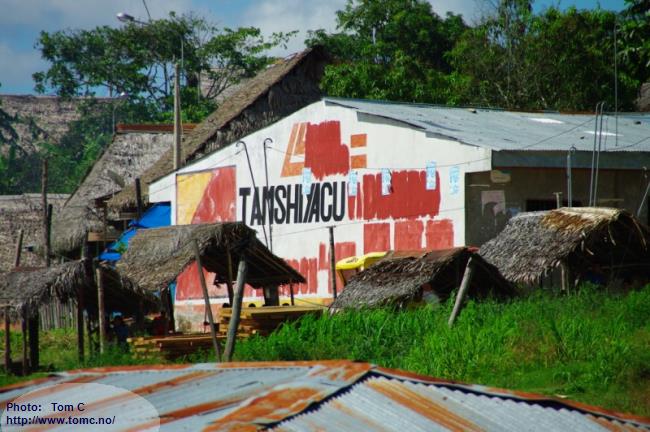
This is floating gas-stations:

We passed the mouth of Río Tamshiyacu:
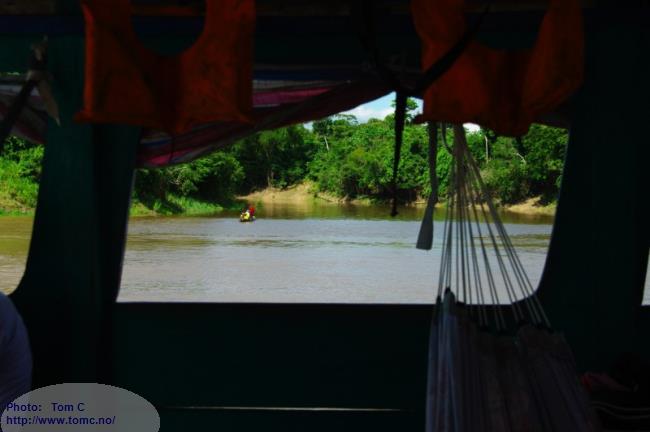
and less than one hour later, we spotted the mouth of Río Tahuayo,
entering the Río Amazonas:
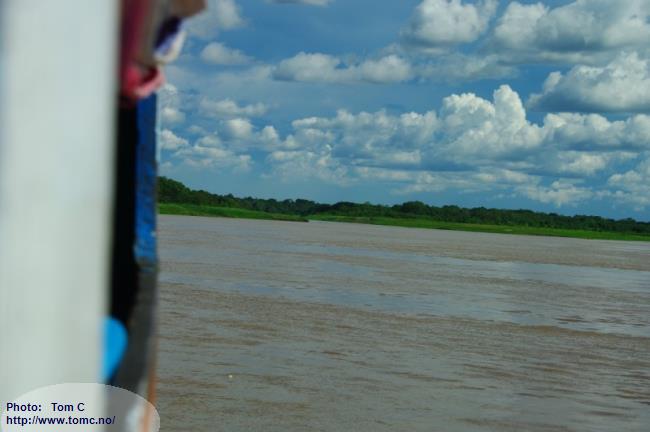
Río Tahuayo:
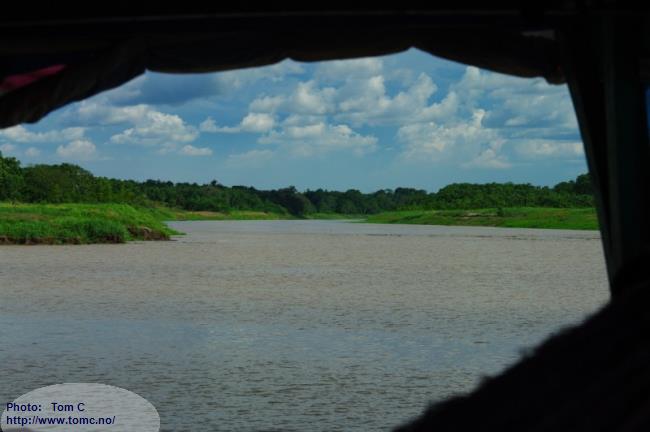
After a short trip upstream the Río Tahuayo:
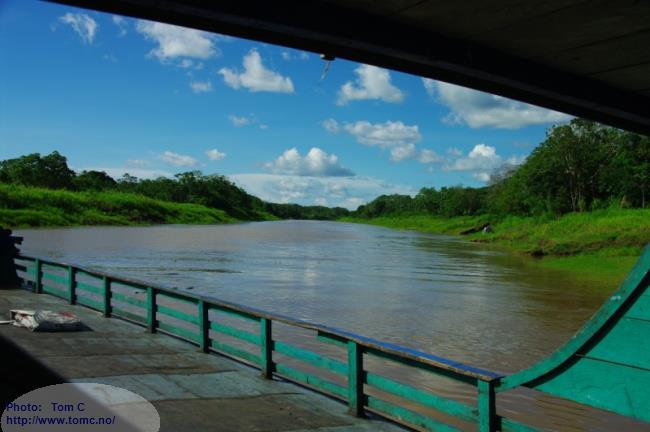
...we left the boat:
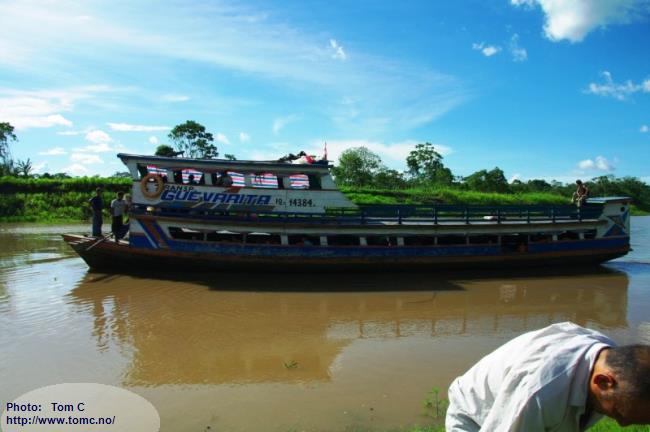
and walked up to a small village, Nuevo Horizonte.
We met our host's youngest son:
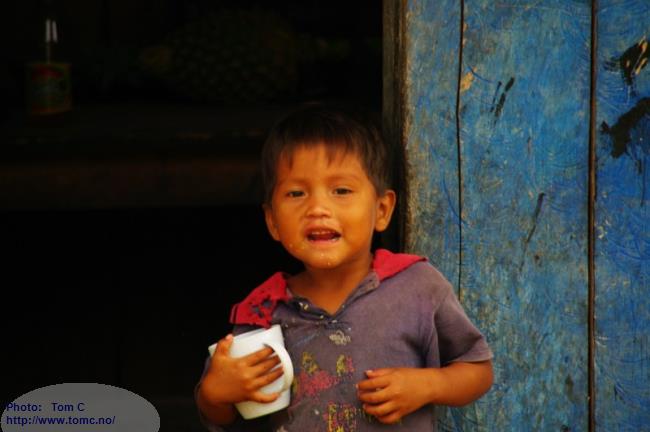
and we were quartered in this house, with his entire family and lots of ducks and chickens:
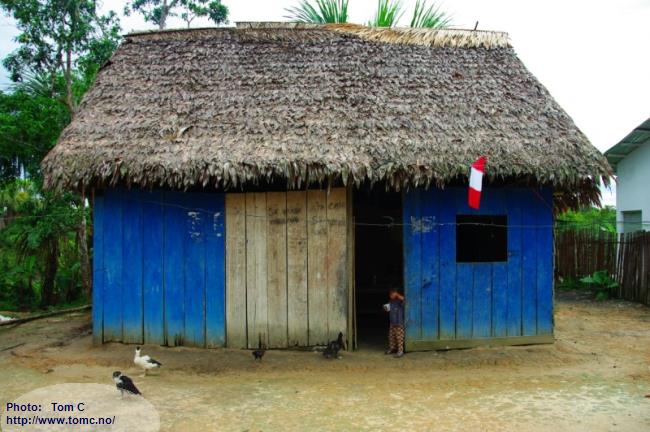
Behind and below the house, there is a small pond:
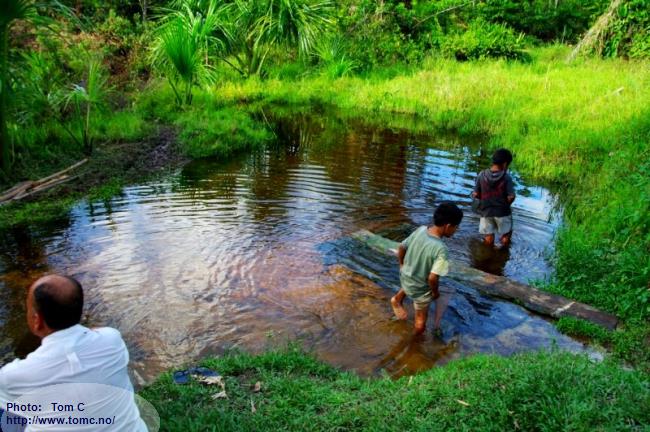
Of course we had to examine the fauna.
Lovely yellow strain of
Nannostomus marginatus:
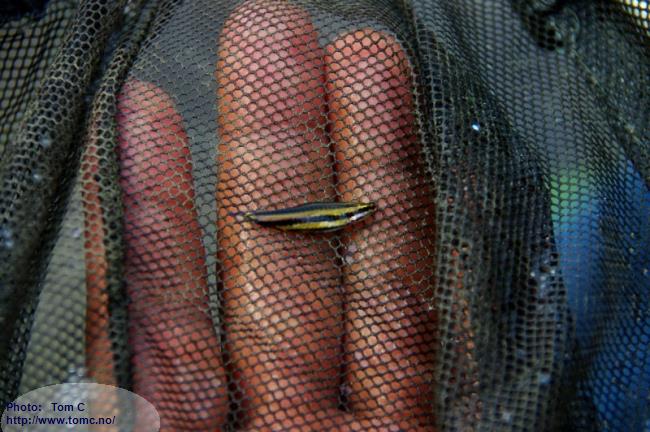
and a few other species too:
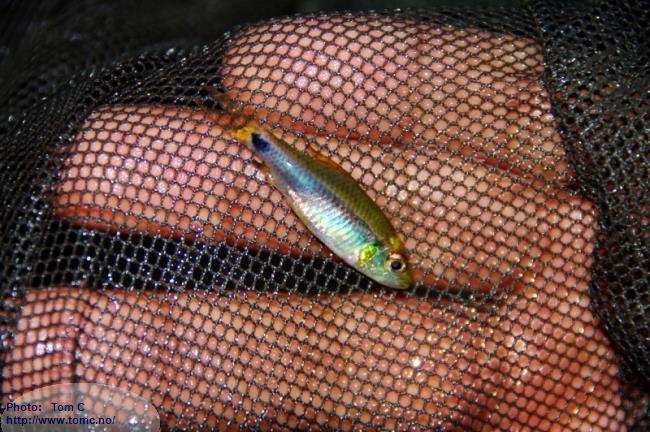
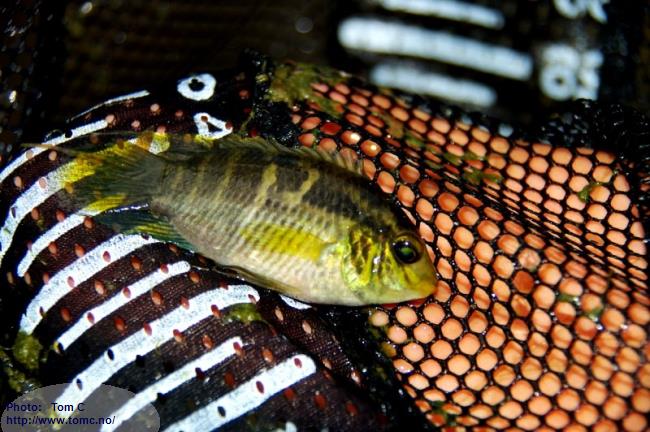
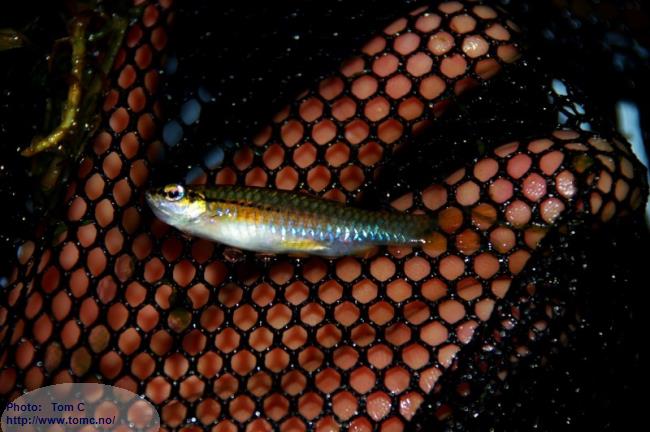
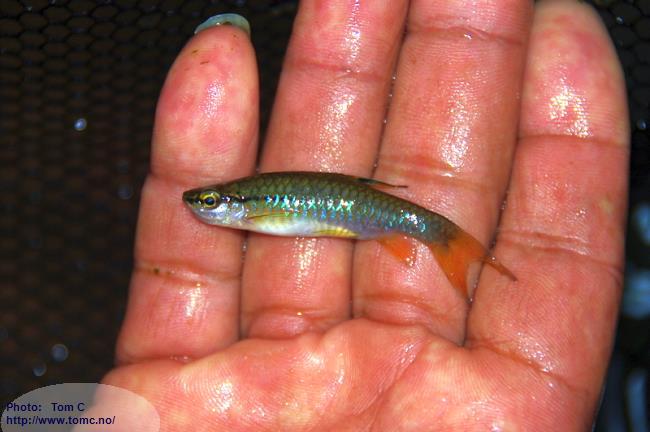
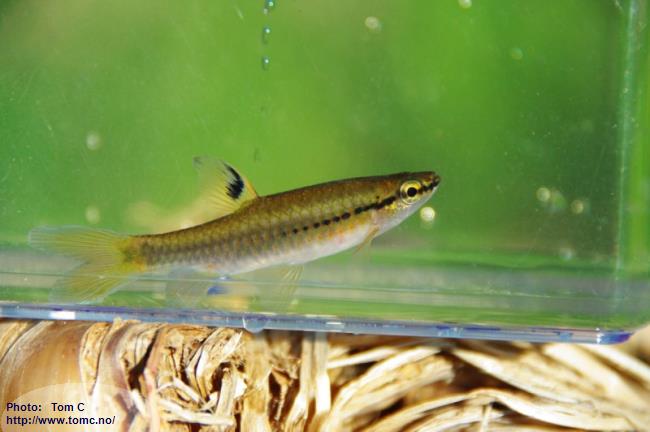
We went to sleep early this evening.
Heavy rain during most of the night. The cock screamed before 05:00.
We left the village, and walked on paths towards a neighboring village:
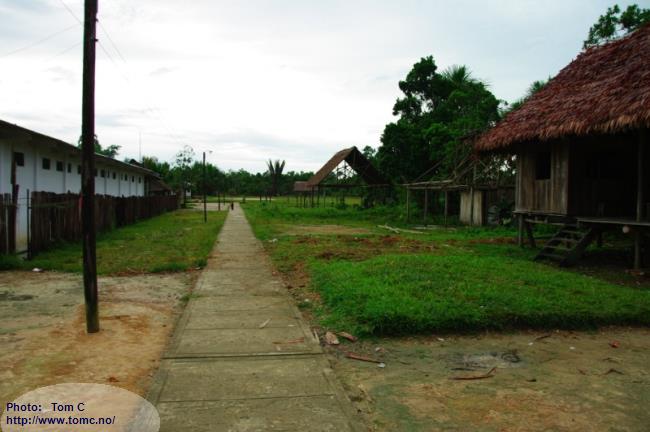
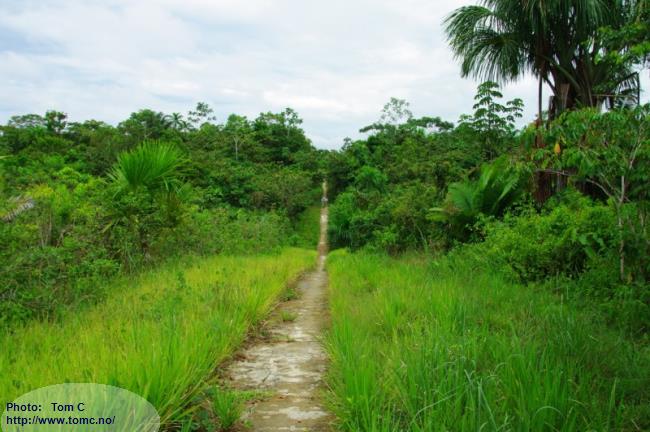
After a couple of hours, we could see this.
The water was grayish, not light brown as it uses to be, because of the heavy rain the last night:
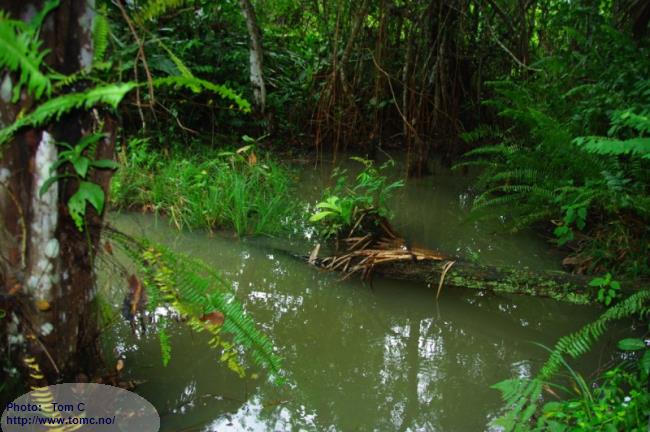

The water:
pH: 4,88 Conductivity:
9 microSiemens/cm Temperature: 25,2 ºC
and there were fish in it!!!!!! :
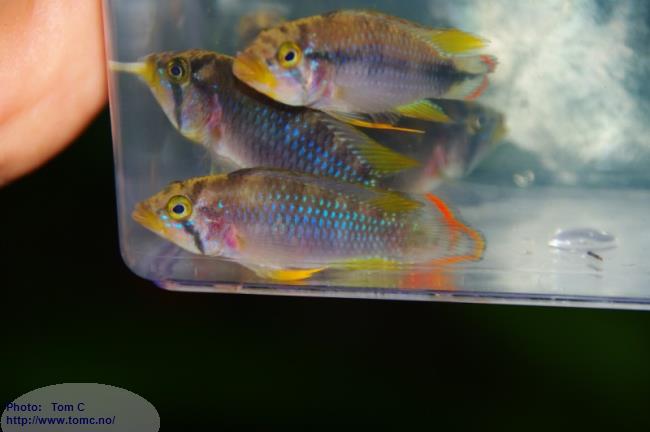
Beautiful
Apistogramma panduro (Tahuayo):
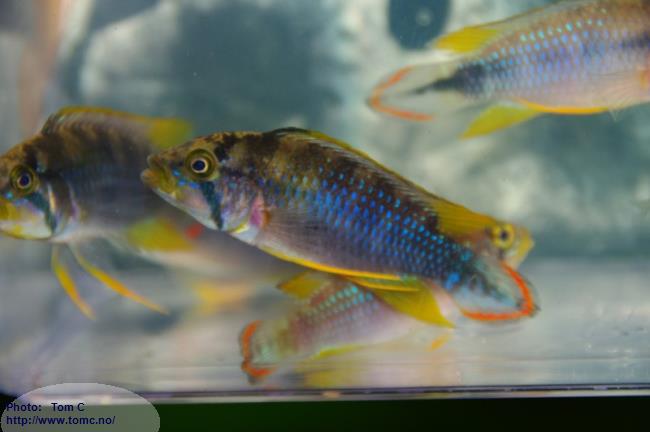
Amazingly, some of the males had cross-stripes in the caudal fin, while others did not!
This confirms that the both forms "A 183" and "A 184" not only being forms of the same species,
but also share the same location.
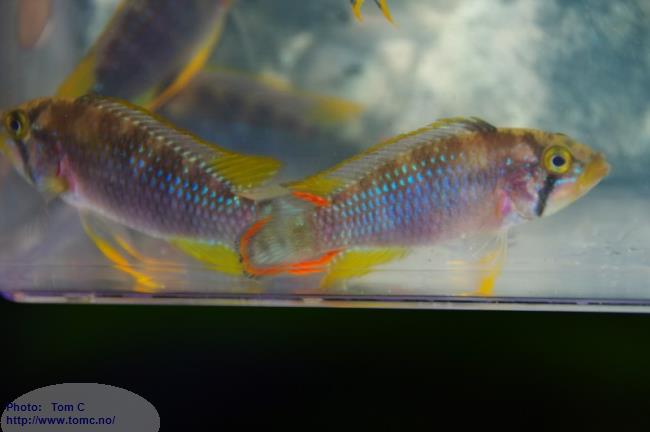
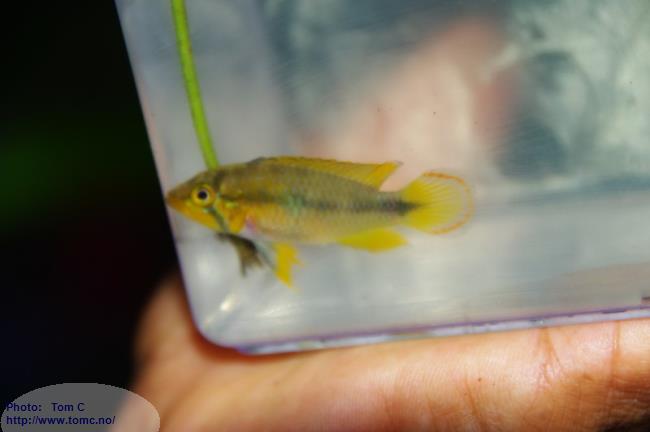
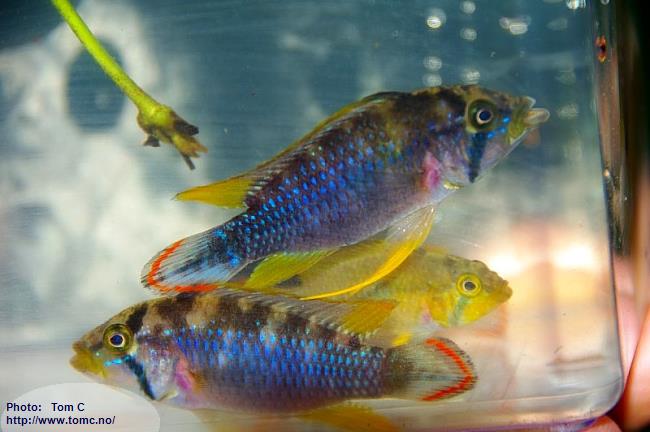
There were some
Pyrrhulina there too:
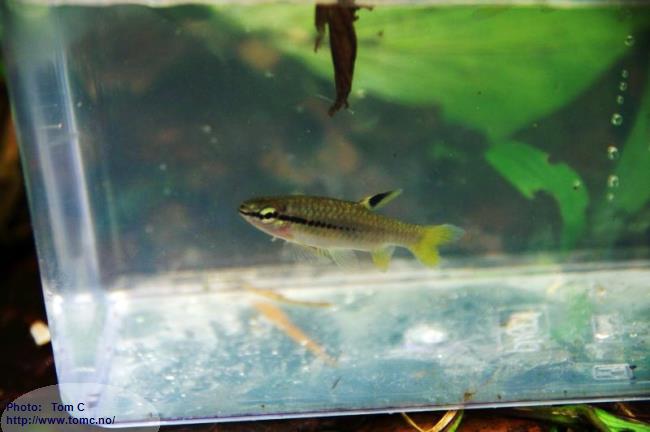
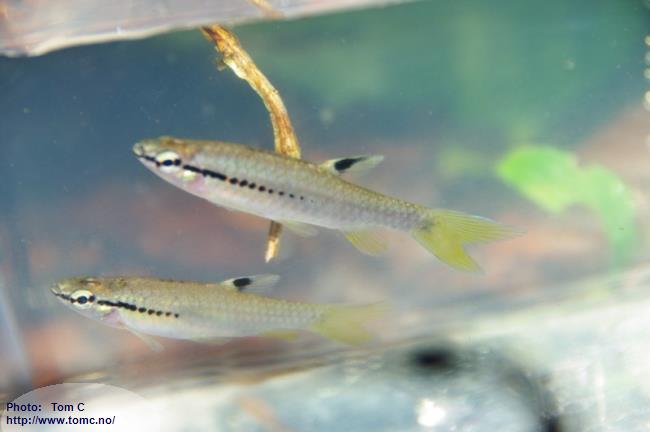
We searched every small water for fish:
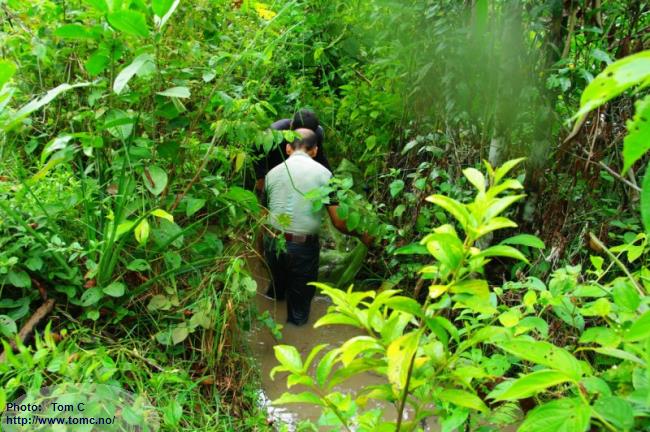
We started on our way back; we would then fish in all the streams and pools
we had passed earlier.
The locals noticed our presence, and they all shouted "Buenos días!" (Good morning!):
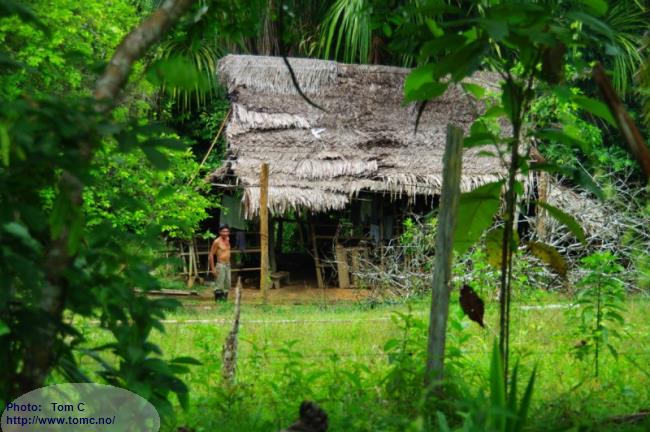
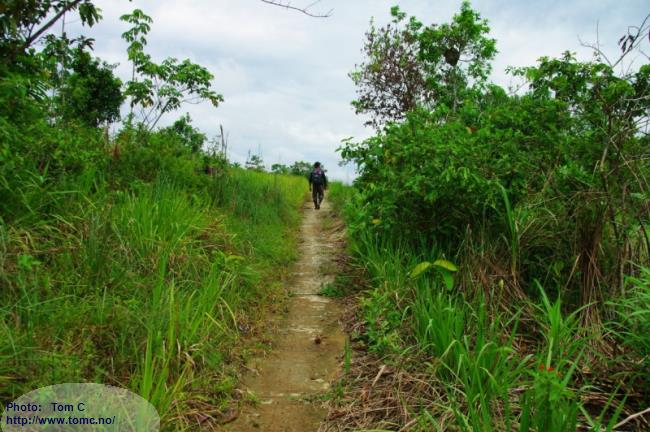
We passed the local police station:
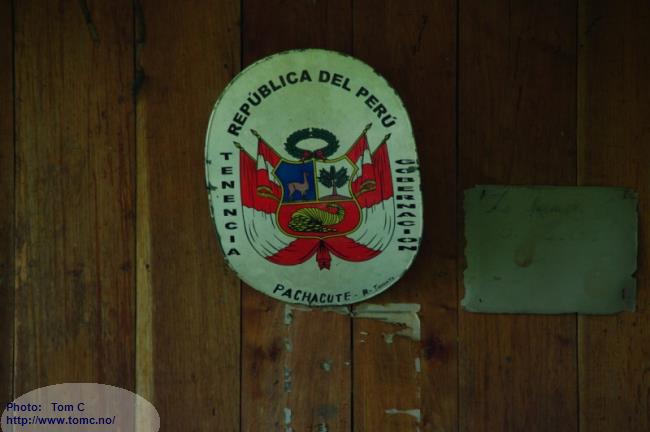
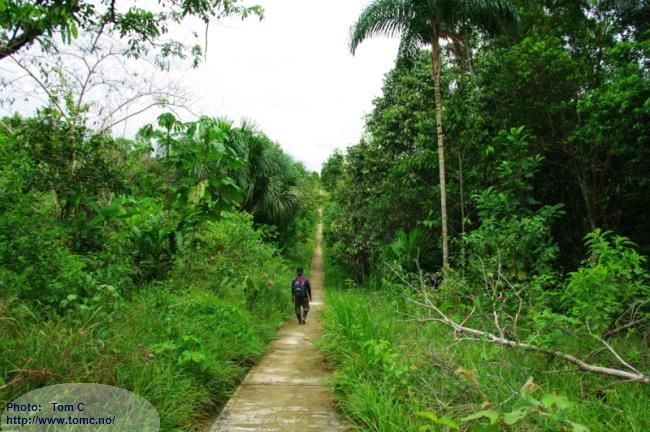
After a while we stopped at this small stream:
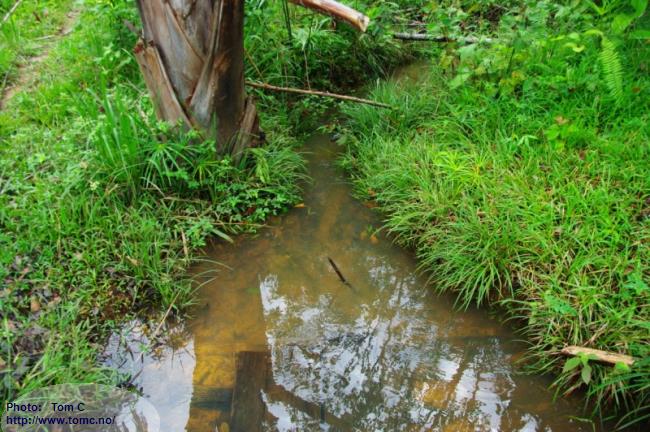
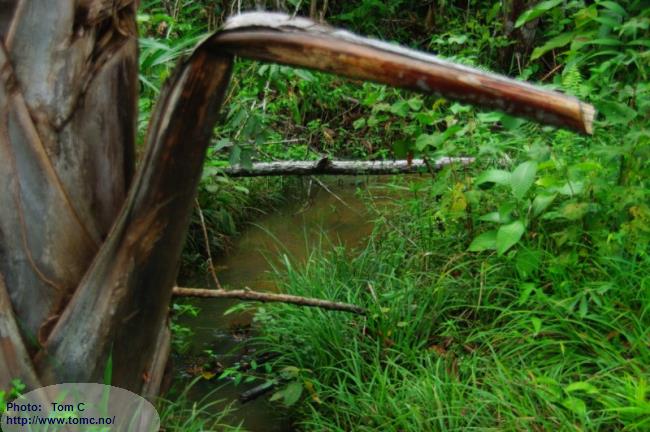
The water:
pH: 6.06 Conductivity:
7 microSiemens/cm Temperature: 26.8 ºC
After having studied the amazing leaf-cutter ants a little:
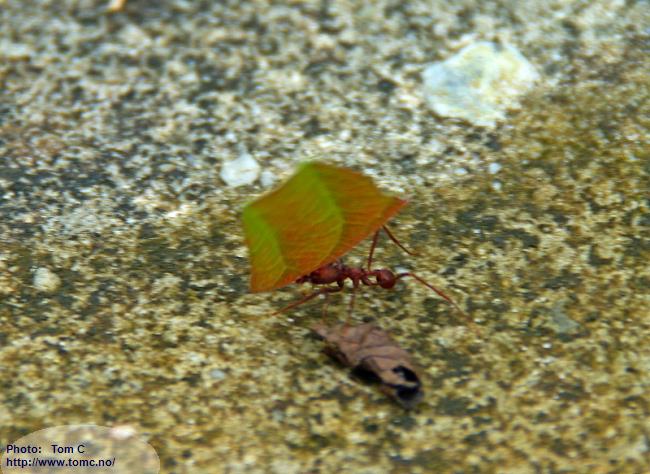
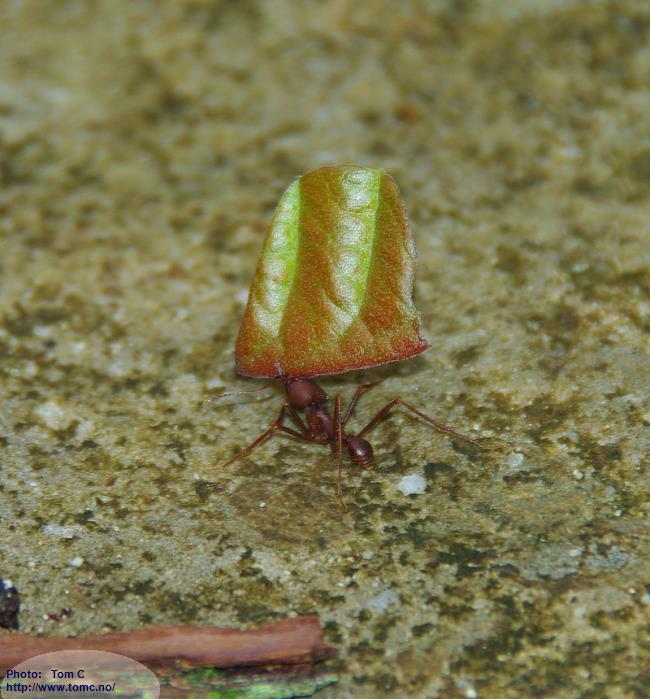
We searched the stream for fish:
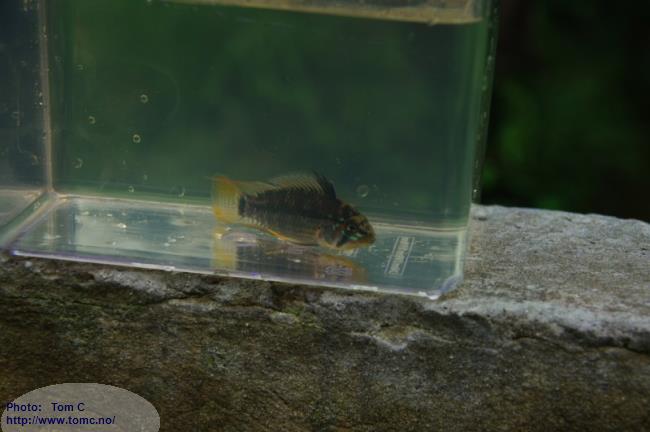
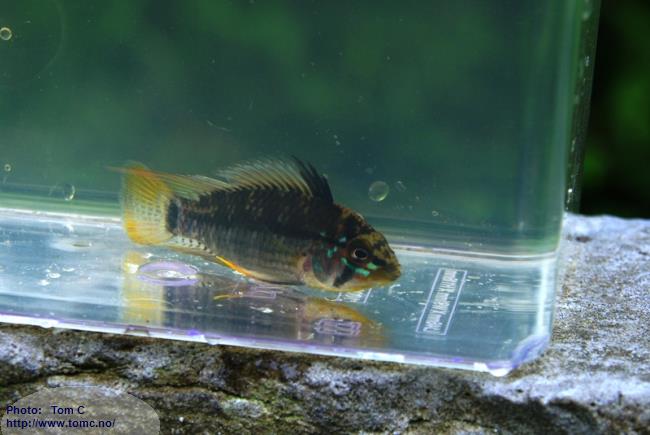
WOW!!! Totally unexpected!!
This fish, with split bars 5 and 6, indicating the
Apistogramma-eunotus-complex,
and with a bicolored caudal fin
with rows of spots in the center, is
Apistogramma sp. "Tahuayo"
I wonder if anybody else has seen this during the last 10 years...:-D
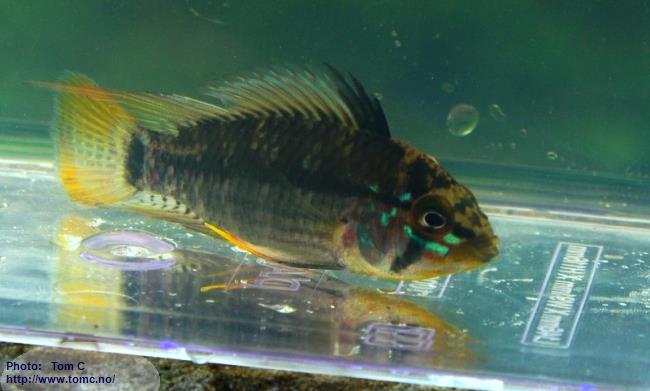
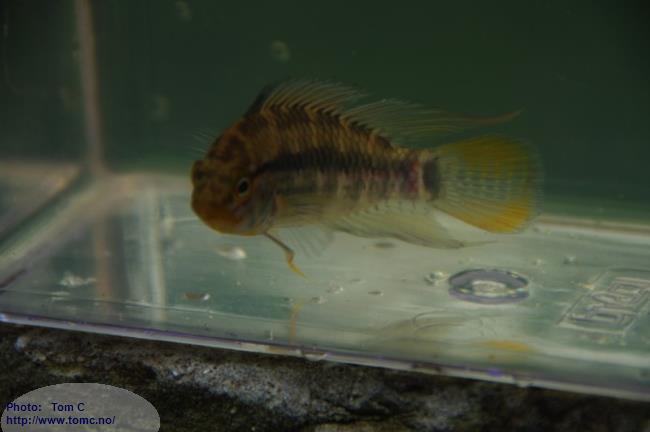
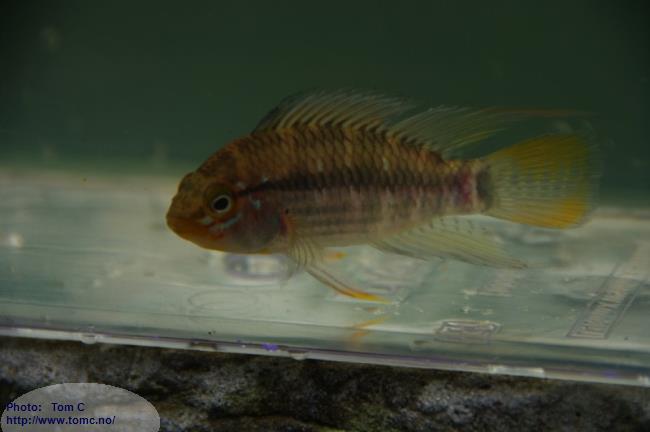
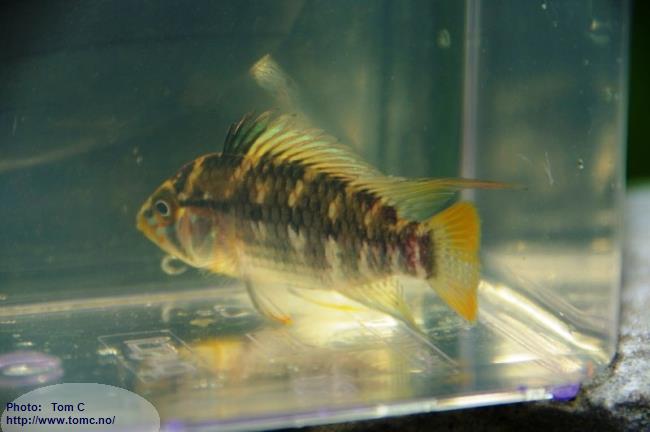
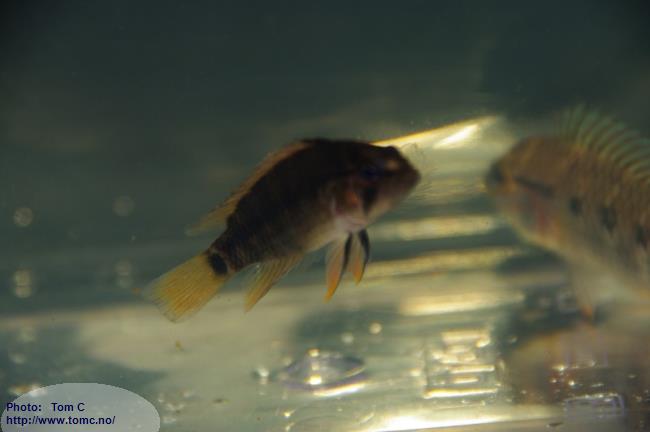

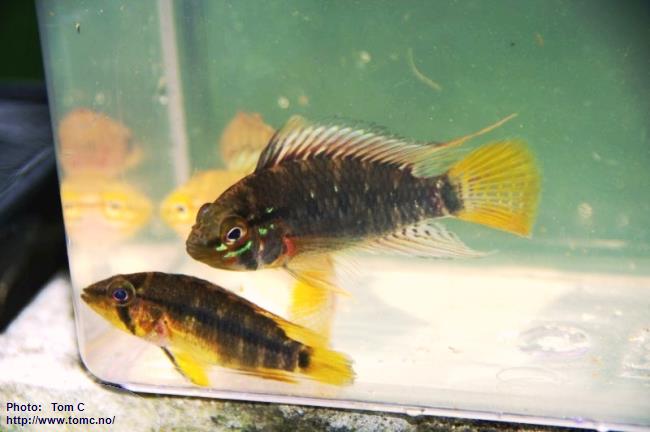
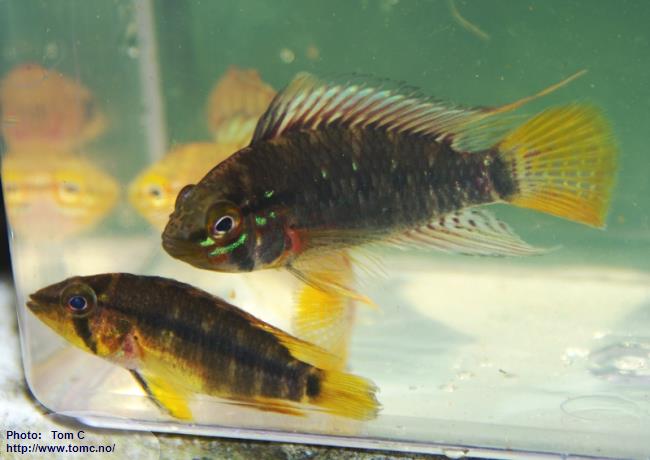
In the middle of this luxuriant jungle...
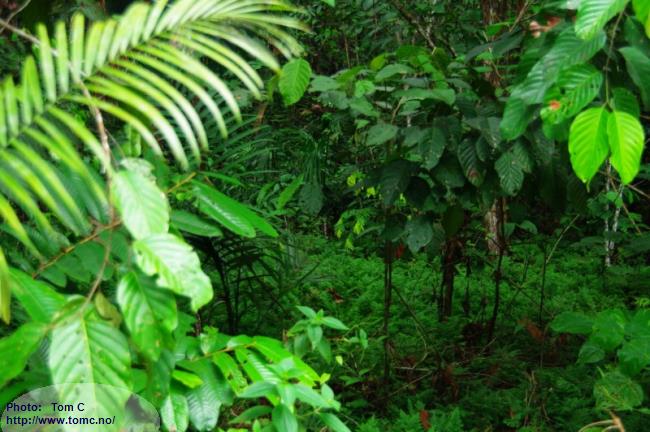
....local people....
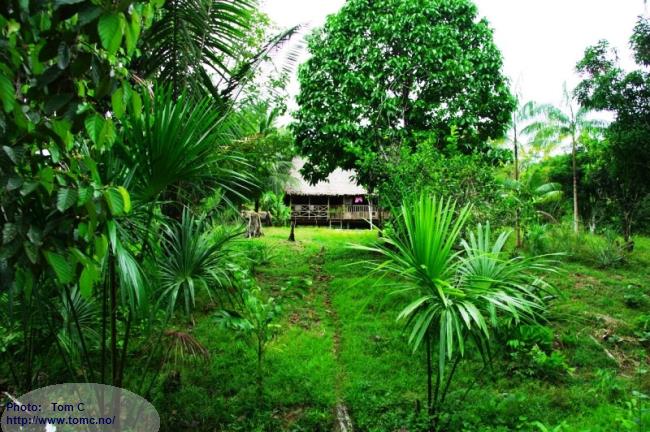
....have cleared the space to grow pineapples,
and they have more than 25.000 plants!
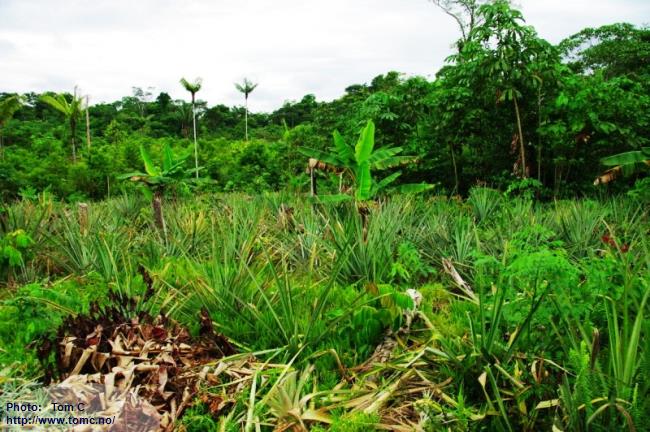
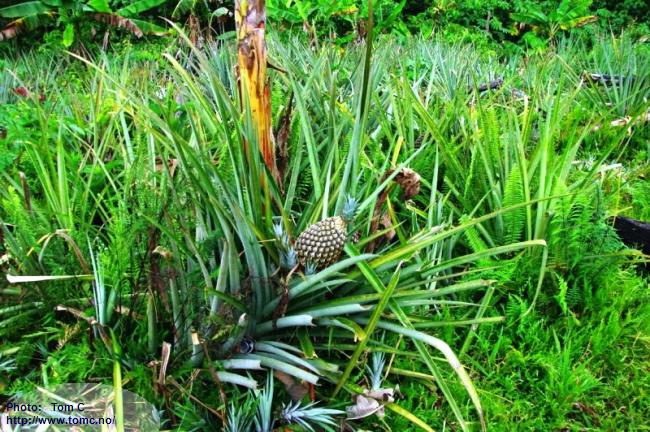
They taste delicious when you're thirsty and warm!
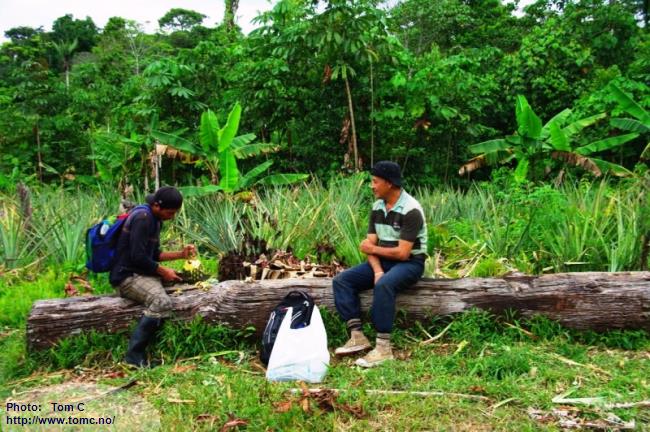
This is the place where they process the harvest:
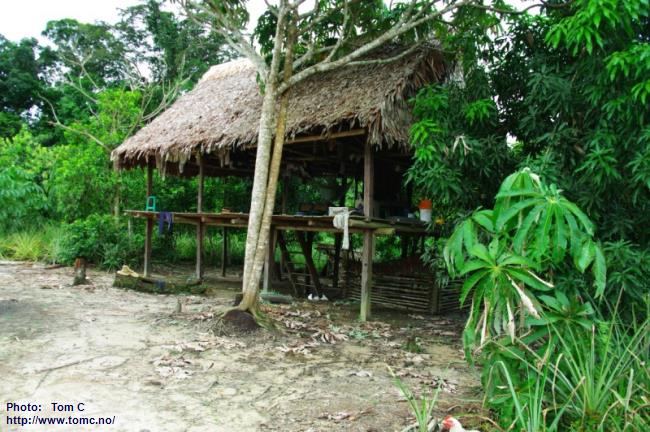
We soon spotted areas with this fern: normally a sign of acid blackwater near by:
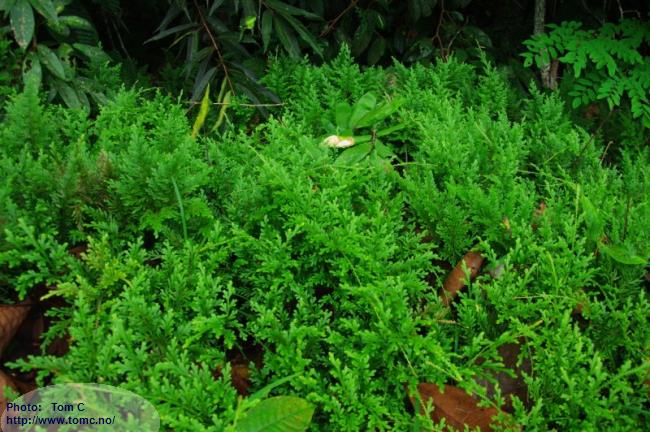
And here it is:
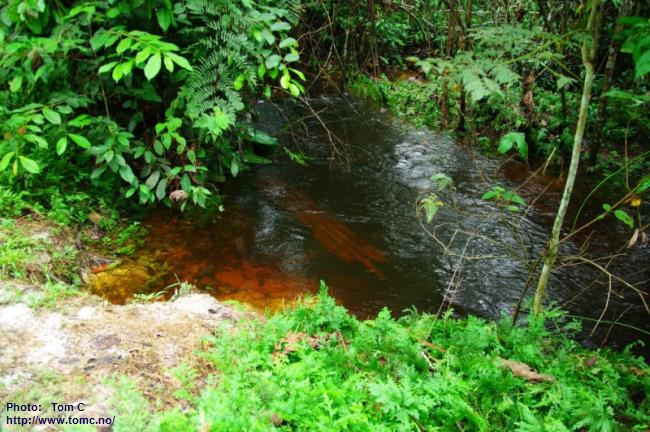
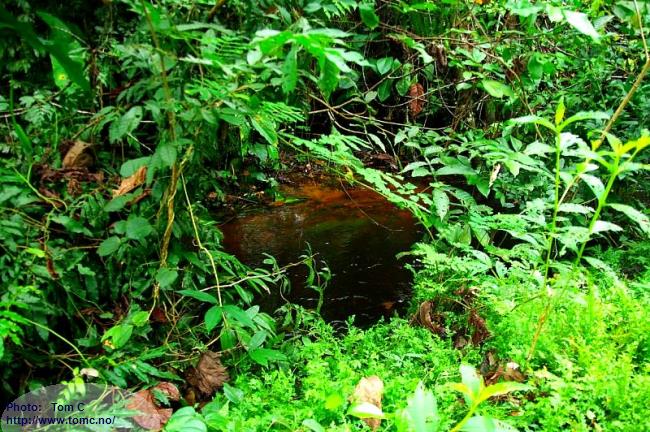
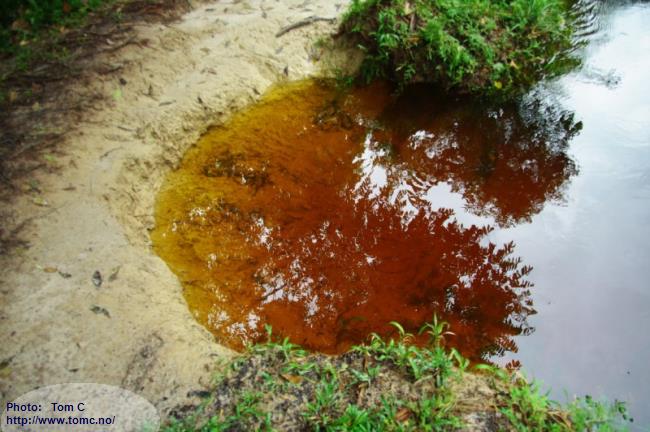
The water:
pH: 4,74
Conductivity: 7 microSiemens/cm
Temperature: 25,7 ºC
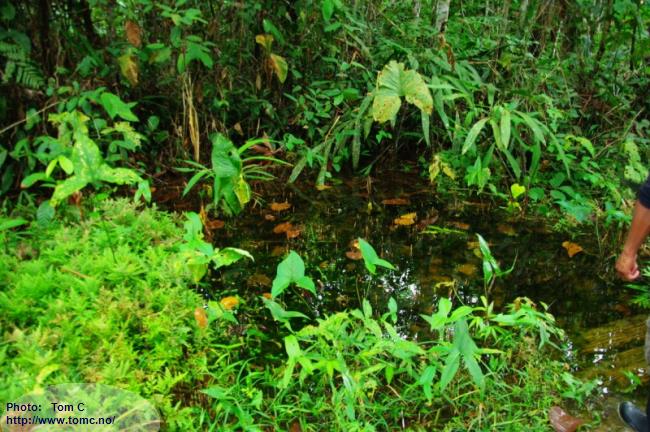
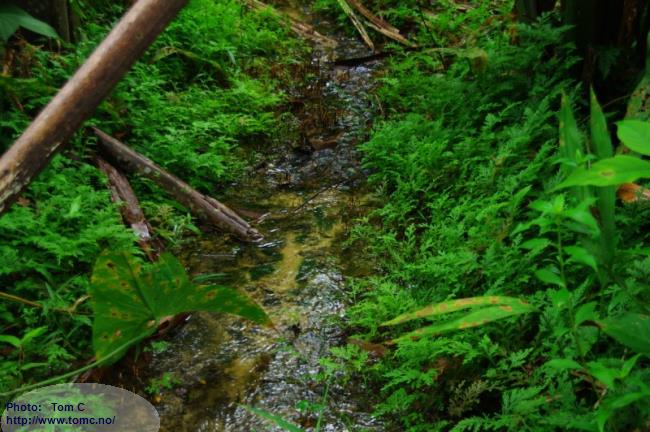
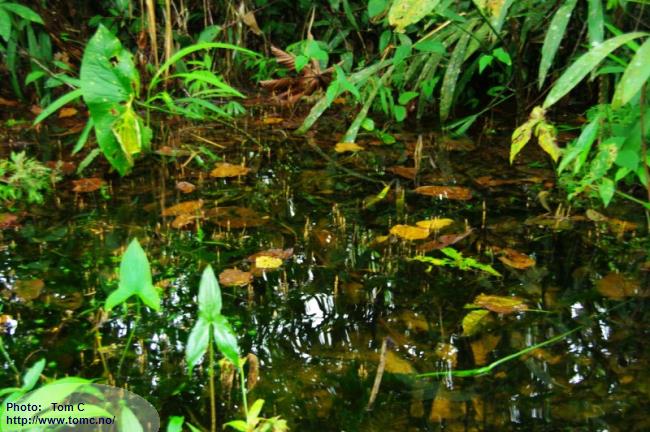
There were lots of fish in it:
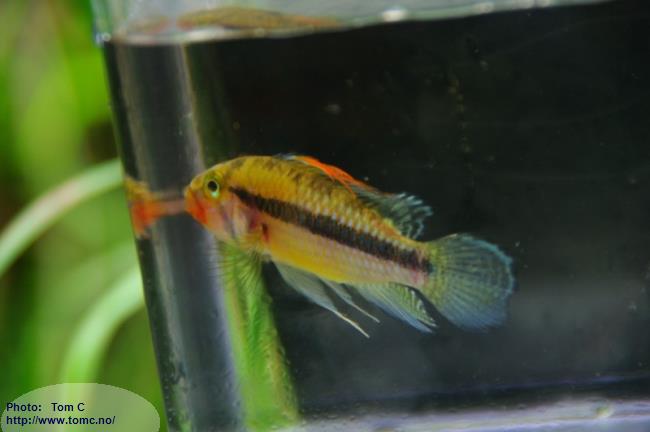
I was quite amazed, as I totally had forgotten that
Apistogramma norberti lives her!
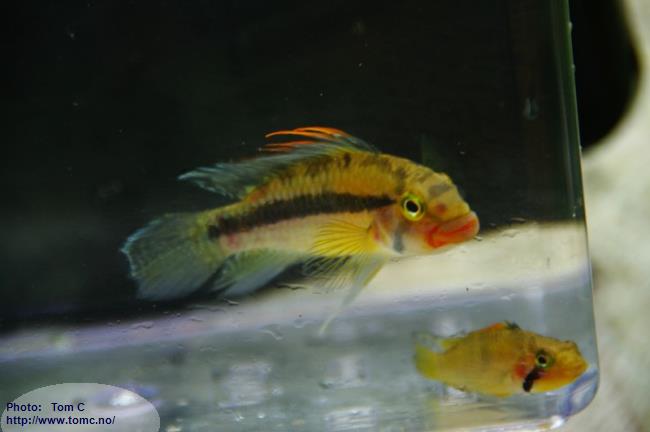
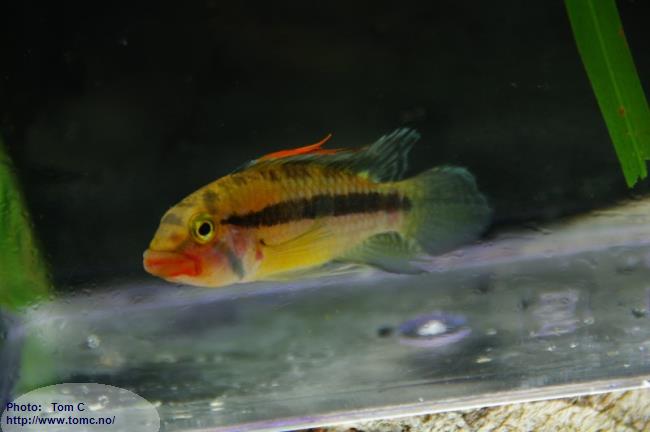
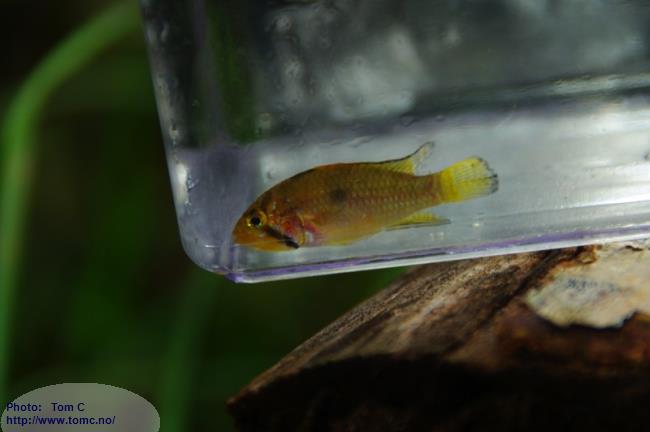
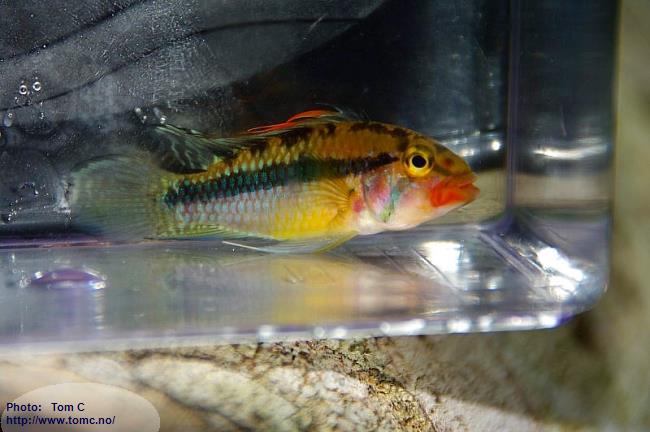
and beautiful
Pyrrhulina spilota:
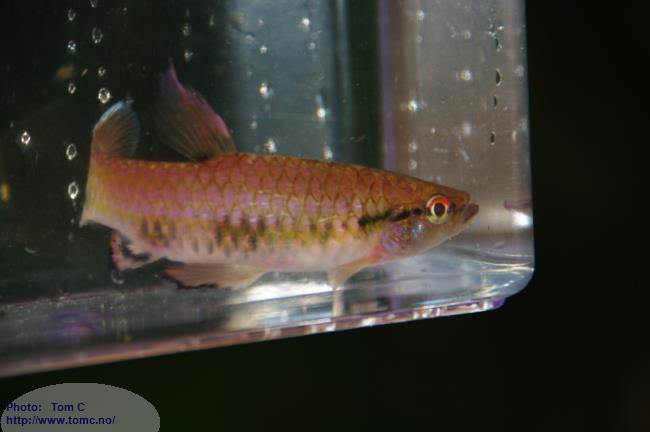
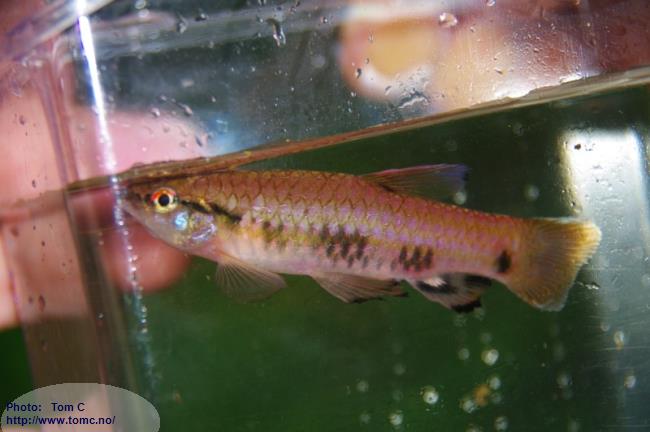
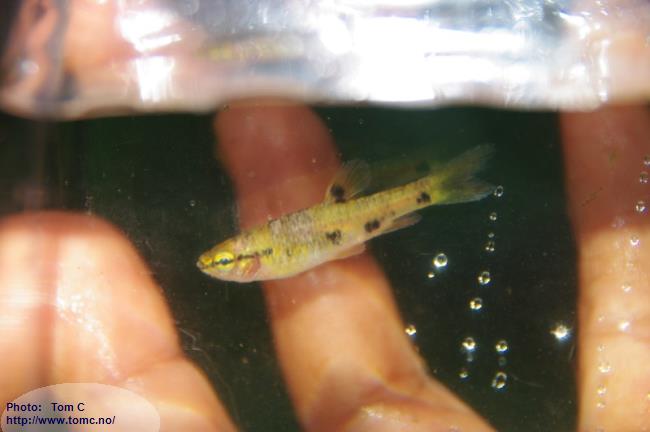
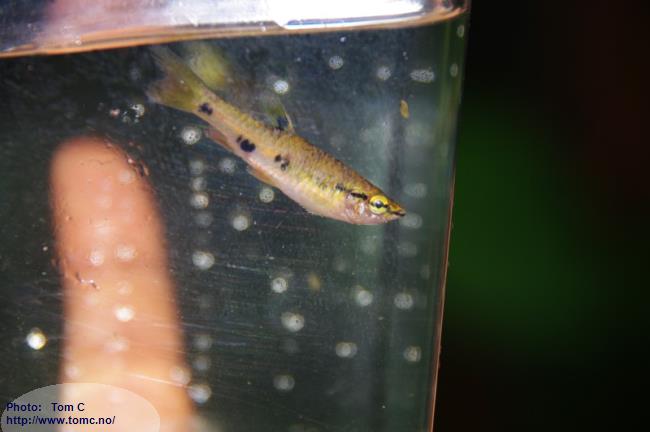
and of course, the always present
Crenuchus spilurus (the Sailfin tetra):
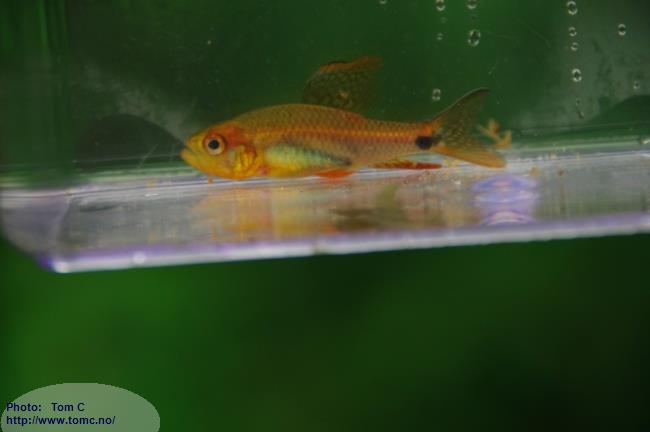
and some beautiful representatives of the local flora:
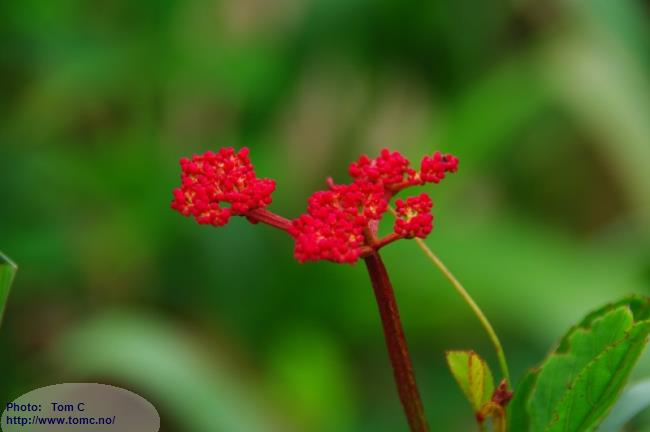
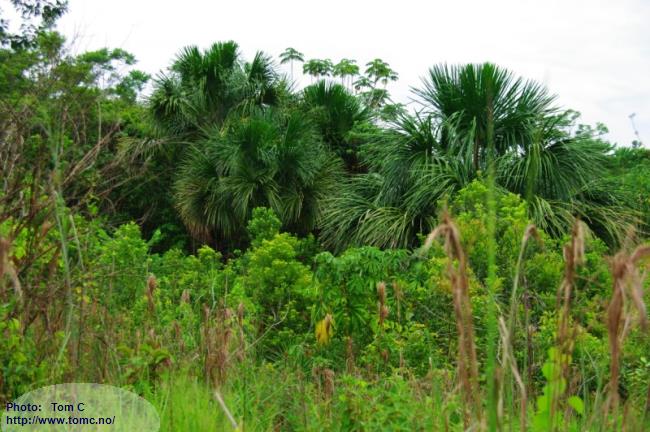
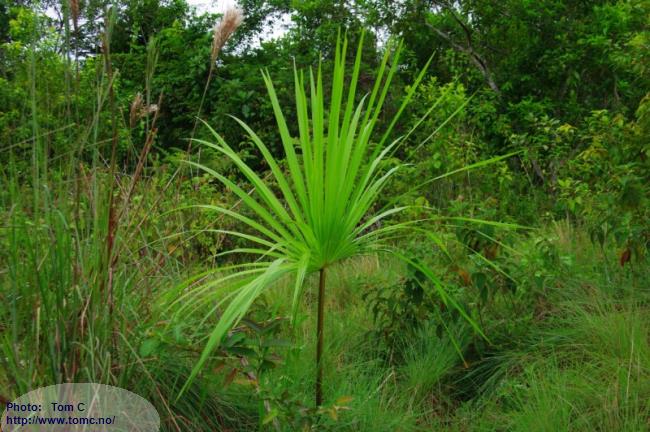
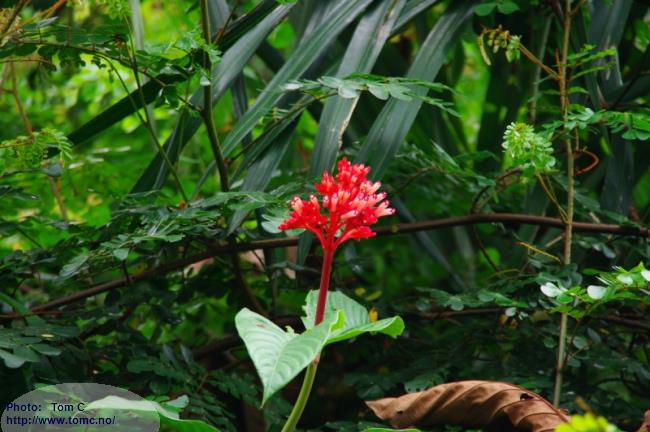
Back in the small village, we examined the pond behind the house better,
including both the supply and the drainage.
And we found beautiful fish:
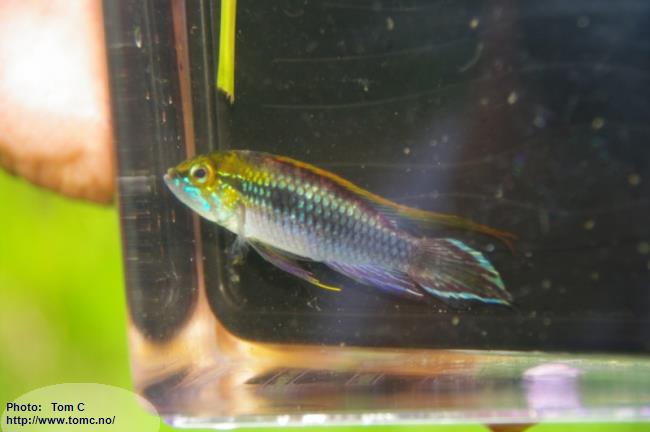
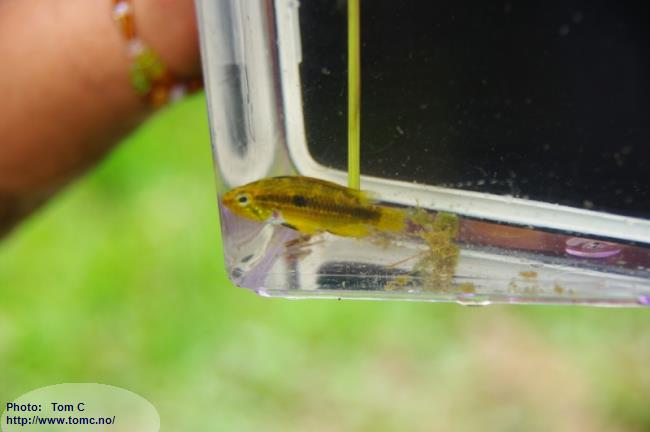
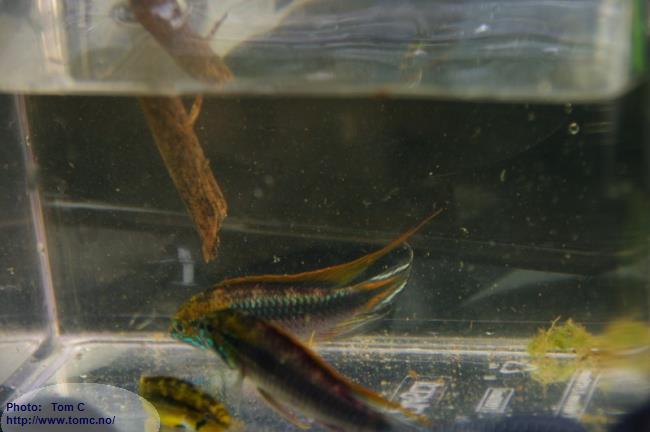
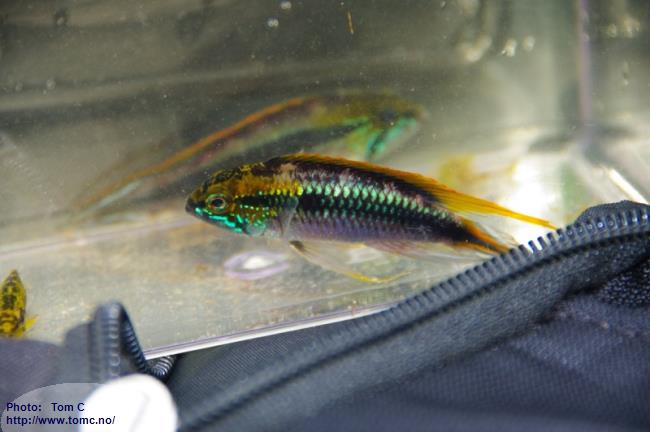 Apistogramma agassizii
Apistogramma agassizii (Río Tahuayo):
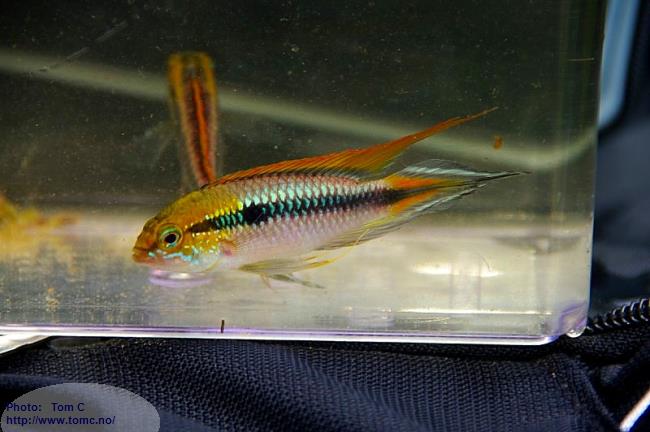
and a form of
Apistogramma cf.
eunotus:

There are lots of amazing birds in the area:
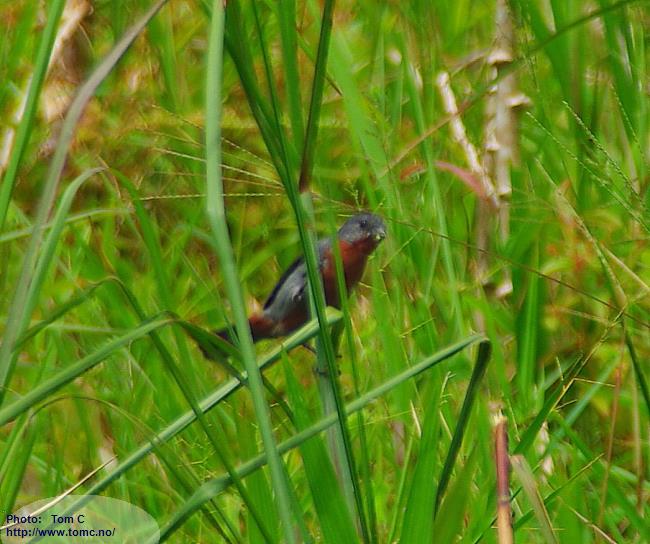
The pond were also the place were we washed after long walks, had a bath when we were hot,
brushed our teeth and washed in the morning etc.
But only minutes after we'd used it, the water was clear and clean again!
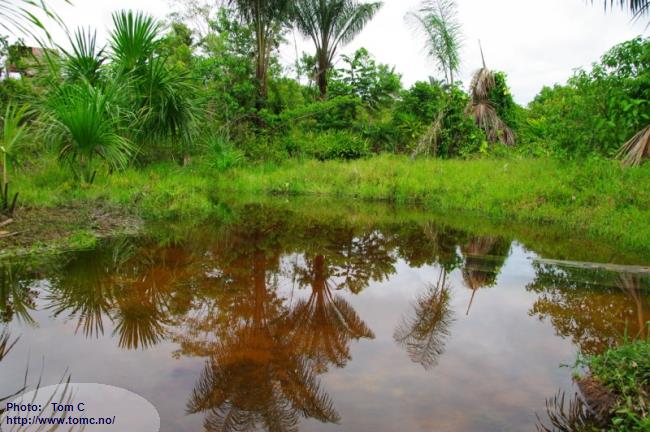
In the evening we went down to the Río Tahuayo, to watch the everyday life here:
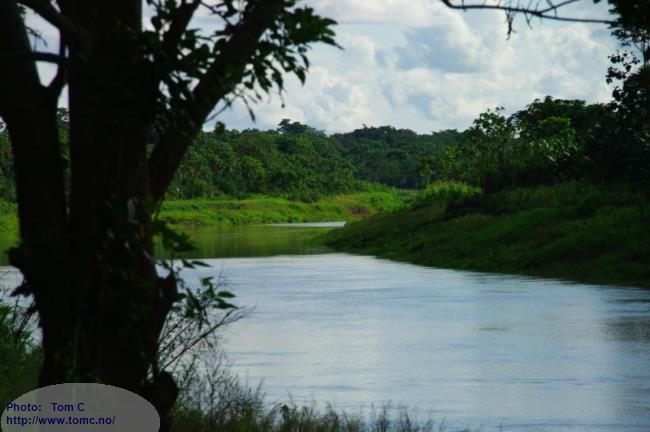
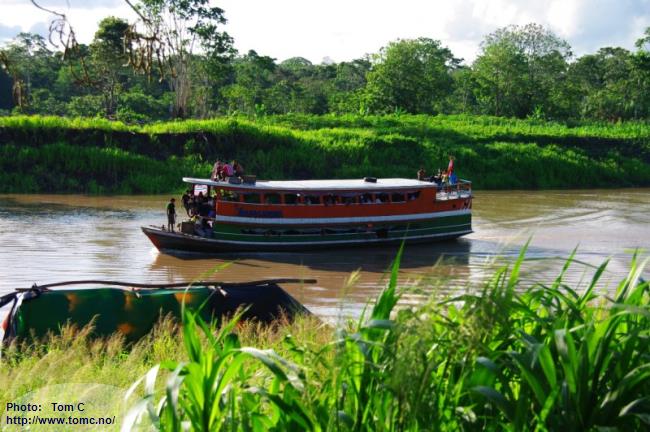
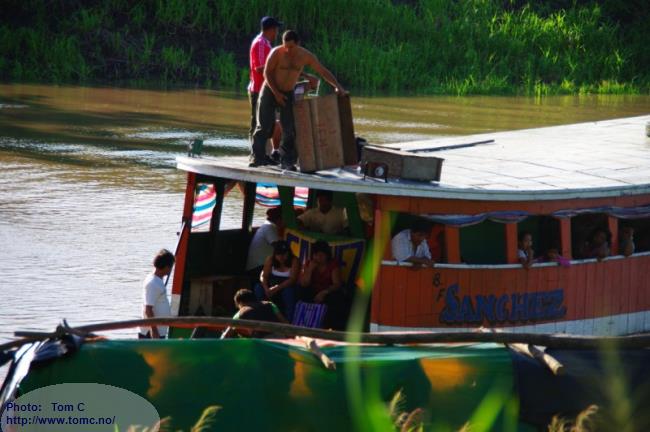
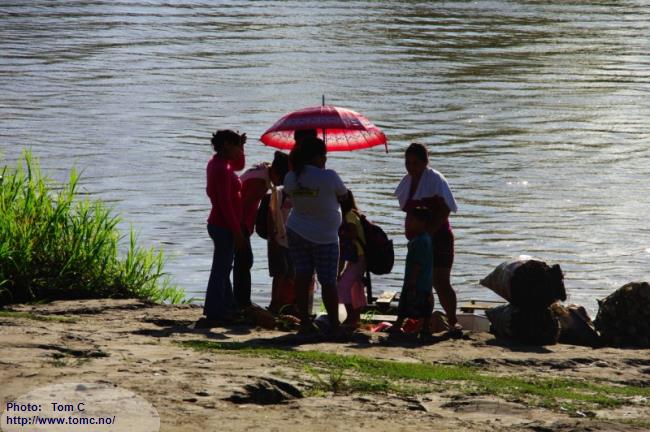
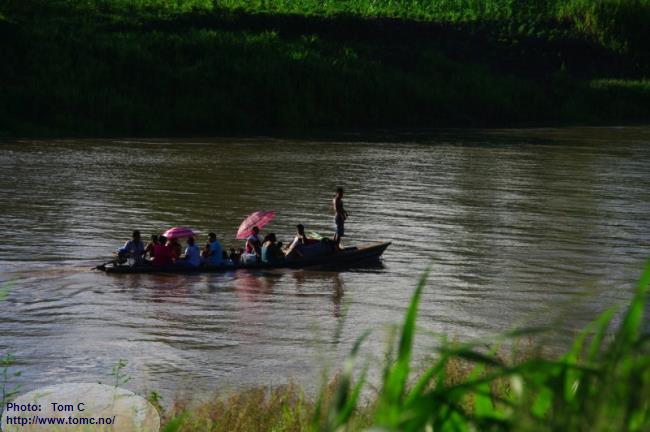
The next day, the Río Tamshiyacu was our focus.

With a small boat (pecki-pecki), we left Nuevo Horizonte at 06:00 am,
heading downstream the Río Tahuayo:
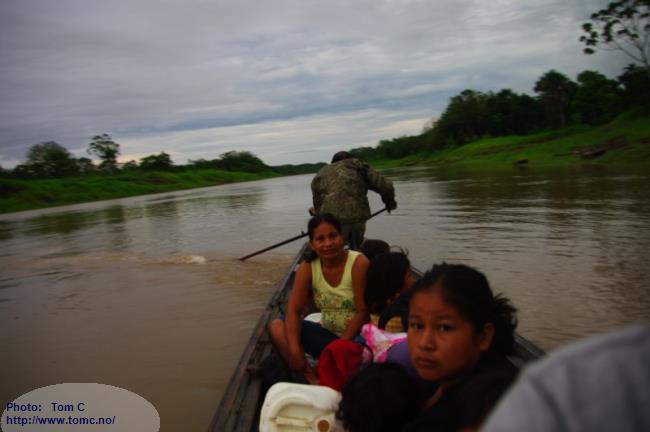
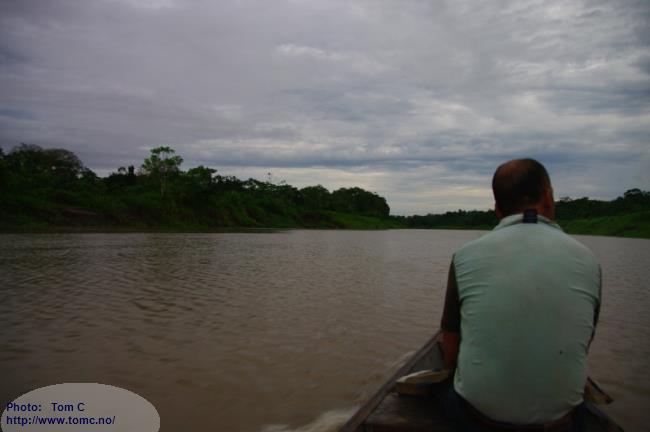
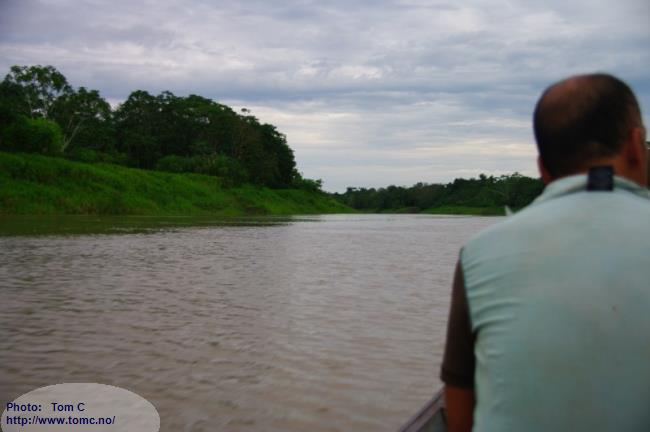
We traveled all the way to the mouth of the Río Tahuayo, and then downstream the Río Amazonas
to the town of Tamshiyacu. There we bought petrol for the engine.
We then traveled upstream the Río Amazonas again, to the mouth of the Río Tamshiyacu:
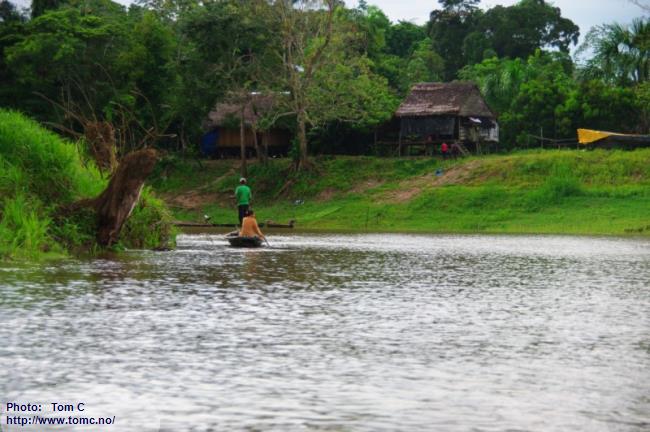
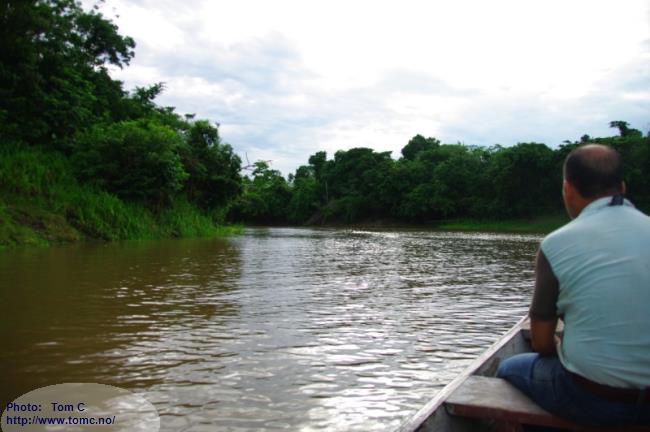
and upstream the Río Tamshiyacu:
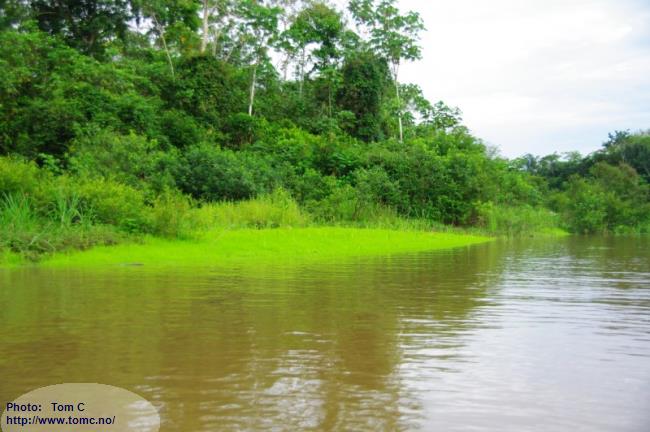

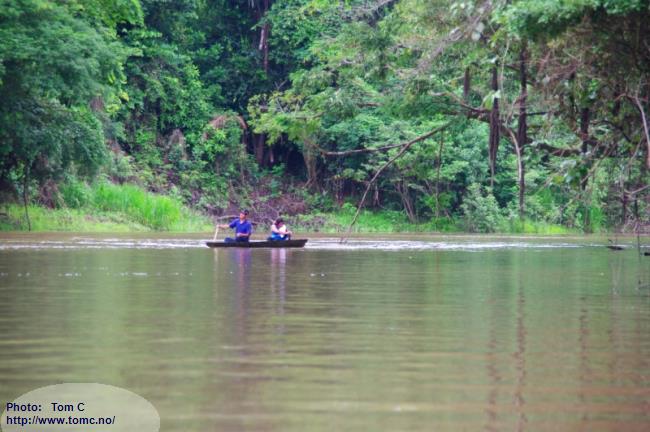
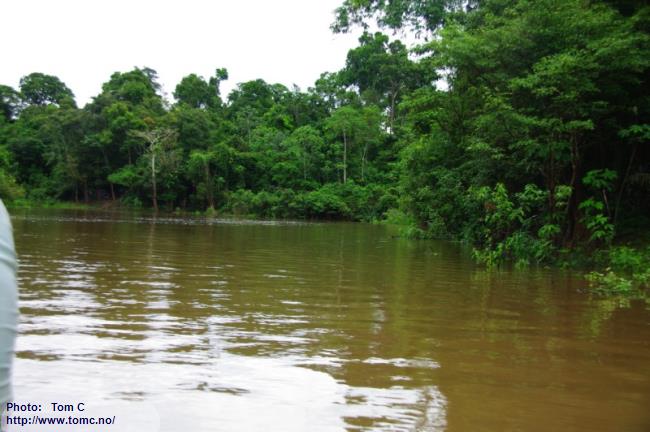
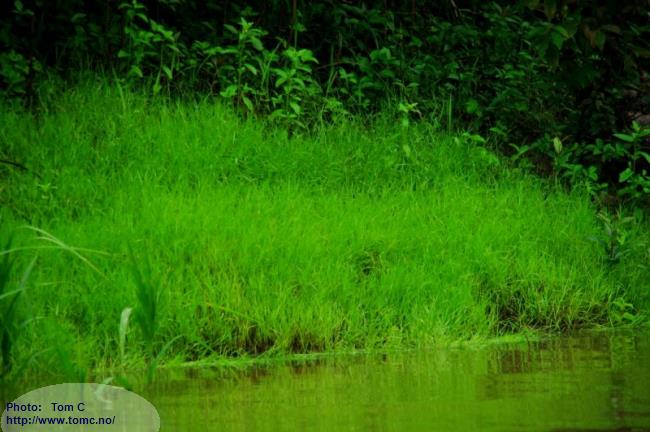

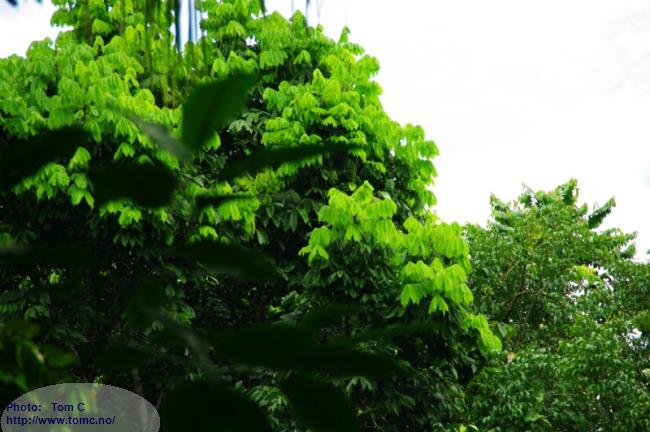
After some hours, we made a stop here, and asked the owner for permission to search for a few small fish (important:
smaller than eatable size!) on his property:
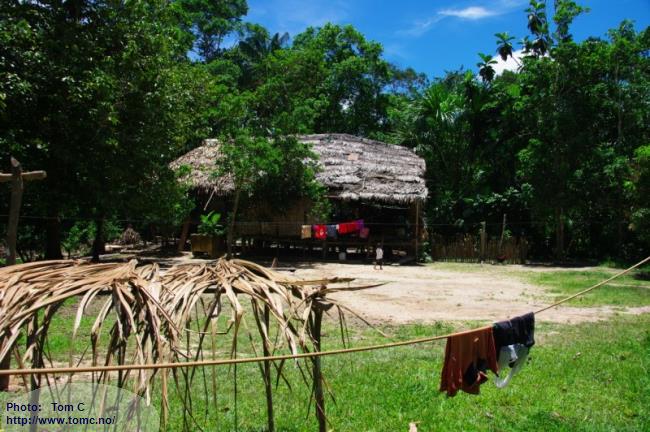
The owner was a very nice person, and he seemed pleased to have visitors. He willingly showed us where to go through the
jungle, to find the small streams inside:
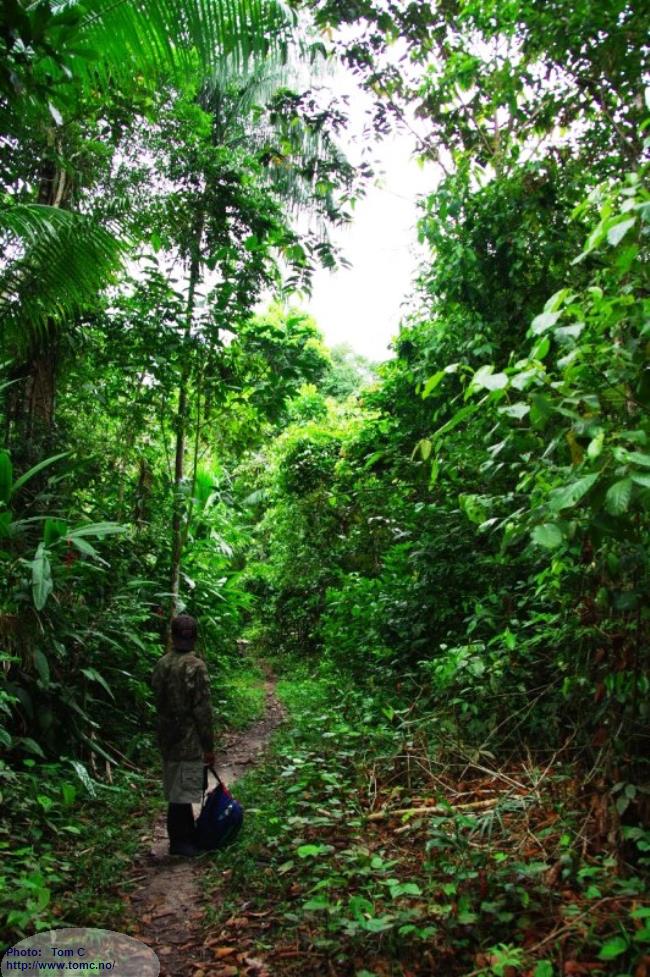
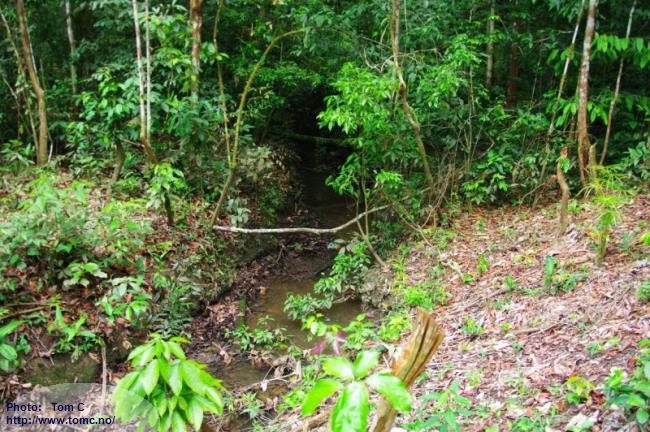
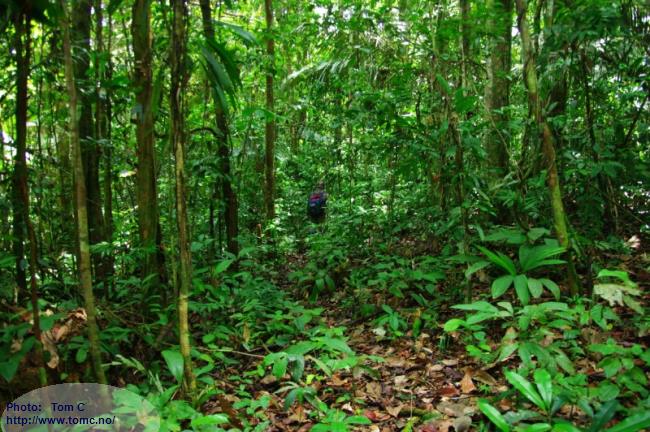
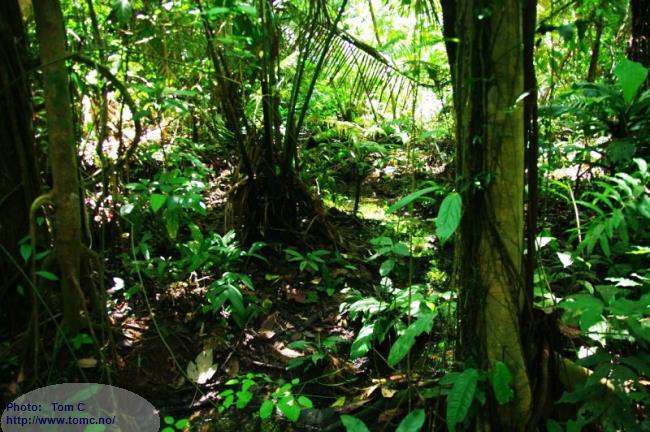
We searched lots of streams (quebradas) for fish, but found not much of interest, if anything at all.
But at last: here we found fish:
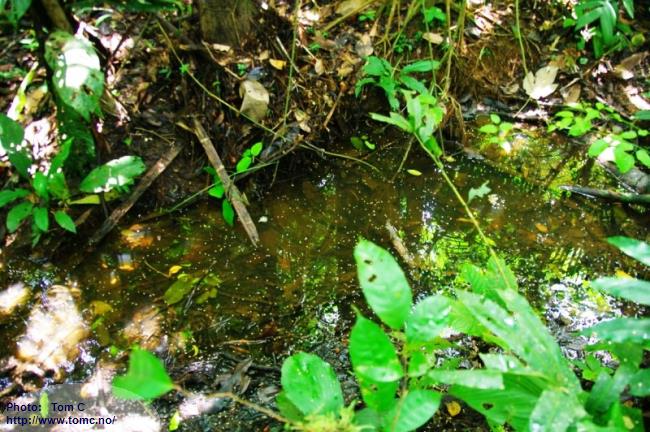
The water:
pH: 5,88
Conductivity:
22 microSiemens/cm
Temperature: 25,0 ºC
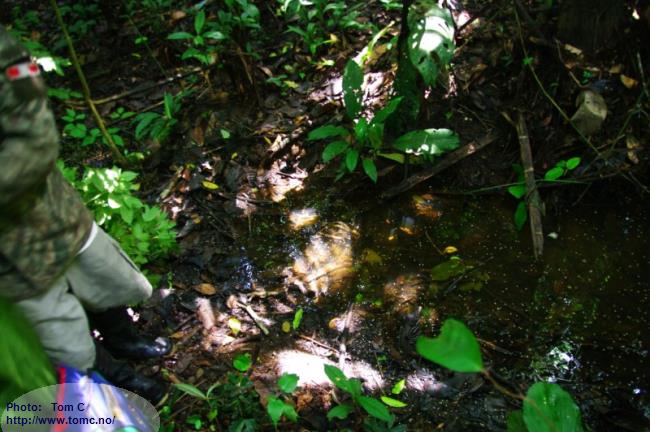
Amazingly, exactly what we were looking for:
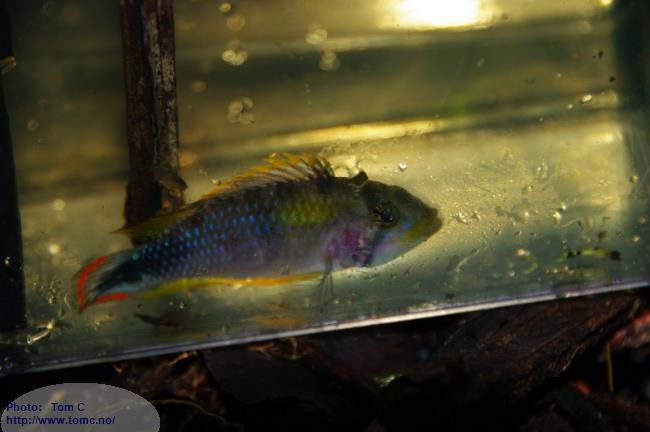
Beautiful
Apistogramma panduro (Tamshiyacu):
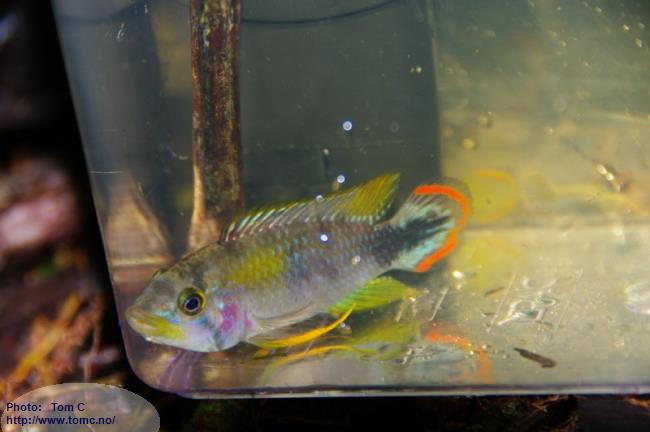
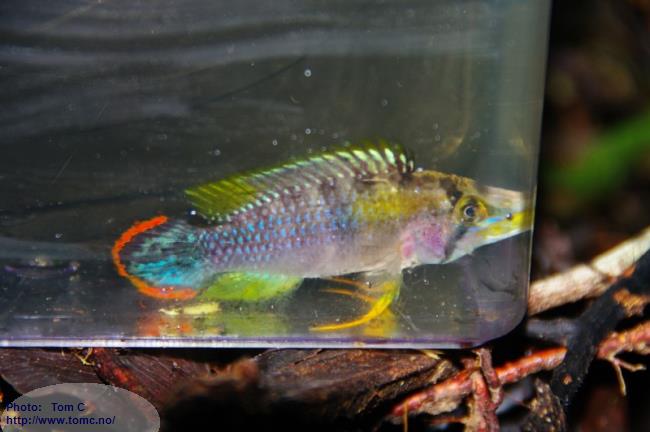

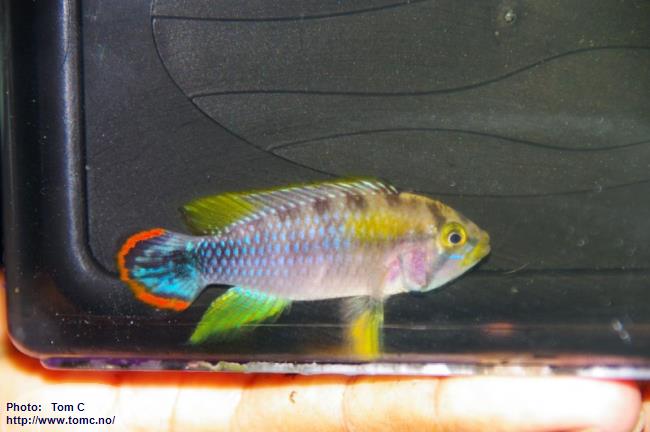
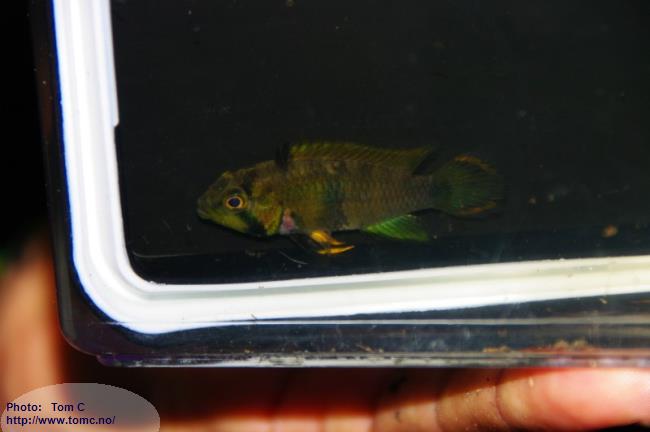

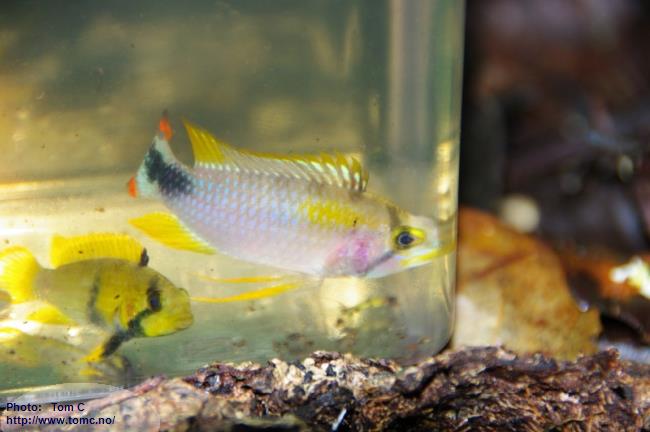
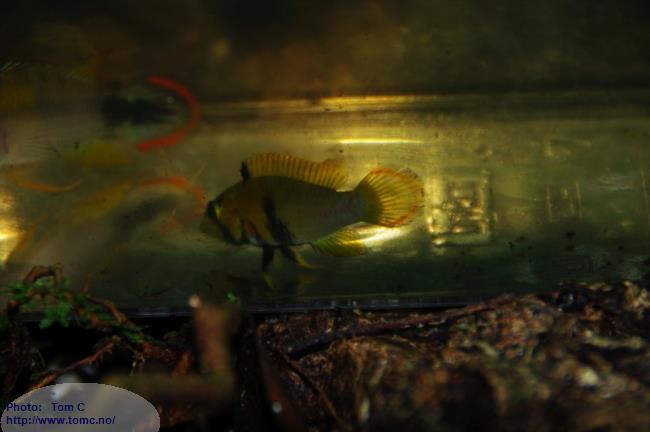
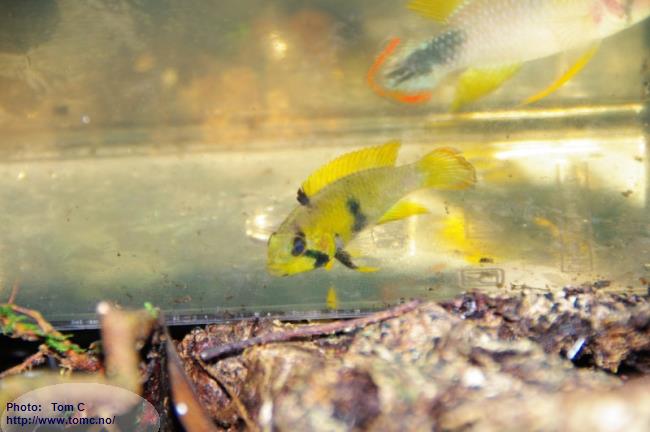
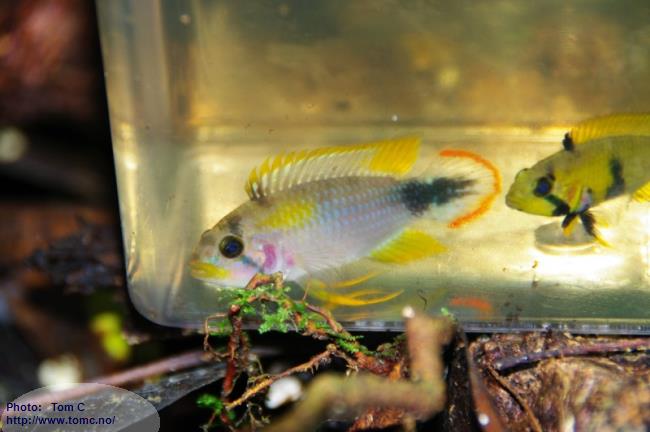
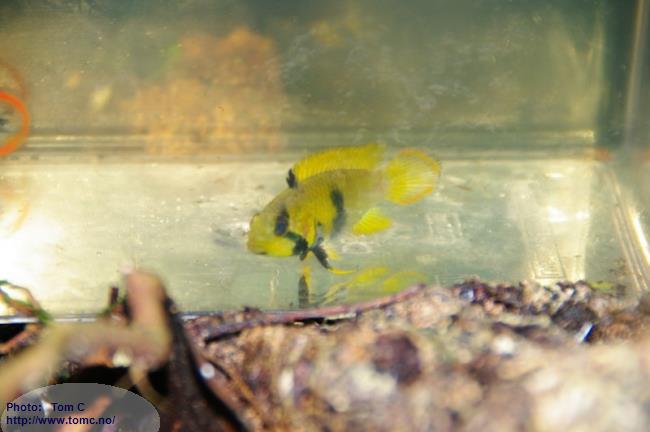
The jungle is beautiful in this area, but quite exhausting to explore:
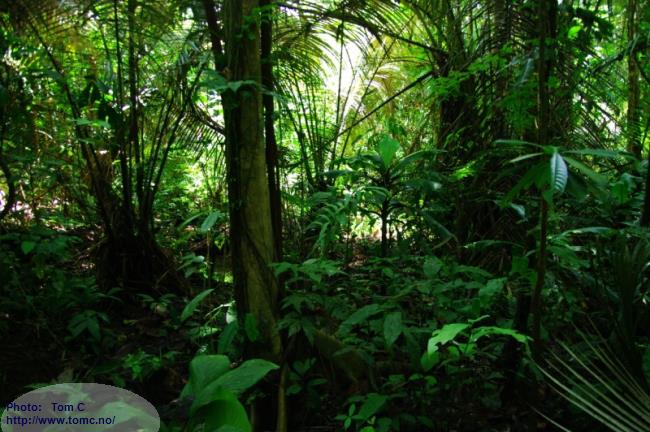
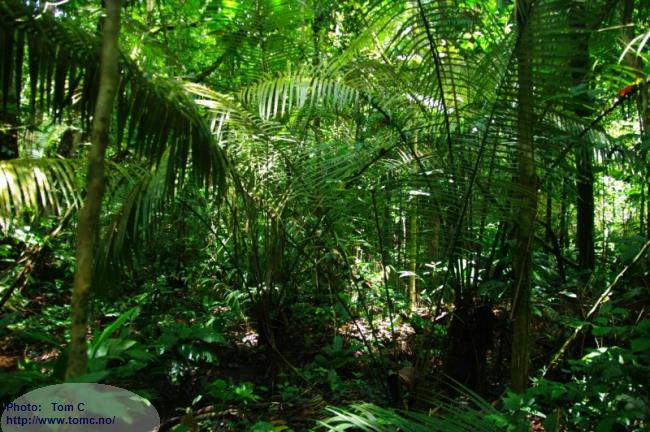
As usual, we found some
Crenicichla sp. in several of the small streams:
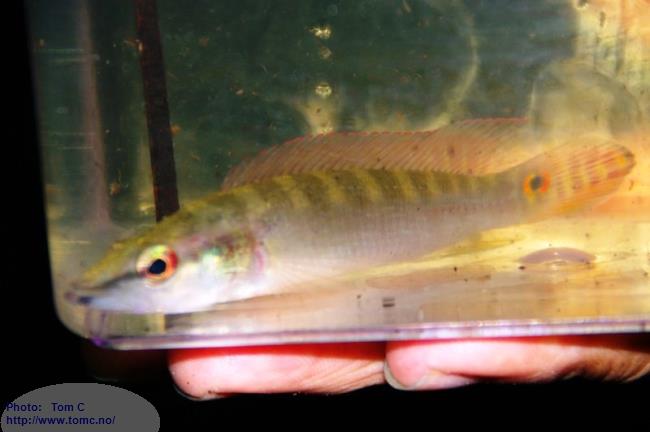
and
Pyrrhulina:
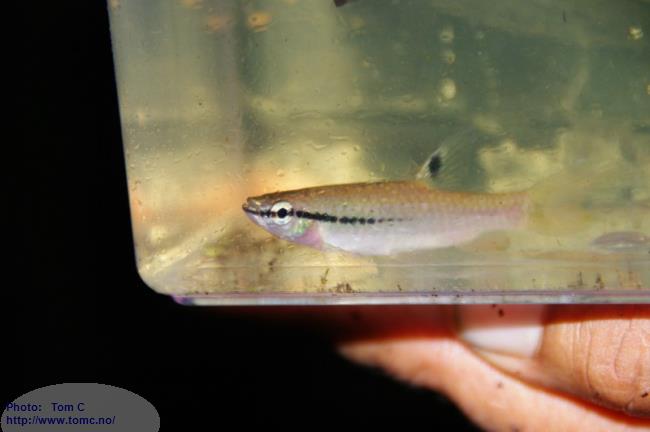
and shrimps:
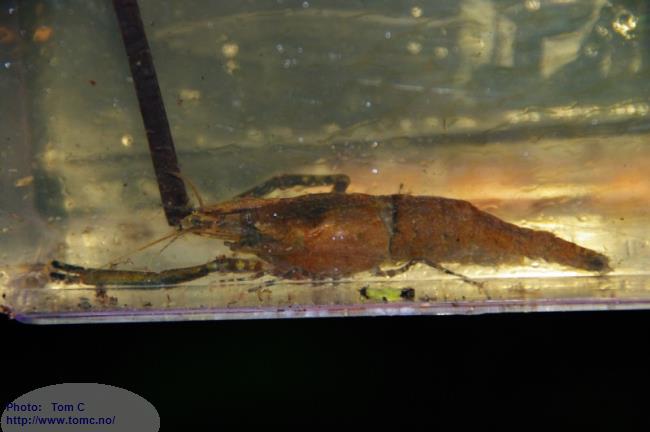
This was a VERY hot day, and we naturally had to build some shelter for the hot sun, where the fish we brought
with us could be kept in the shadow:
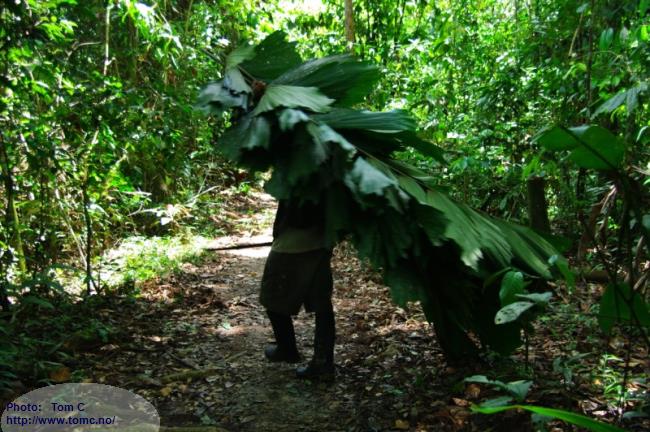
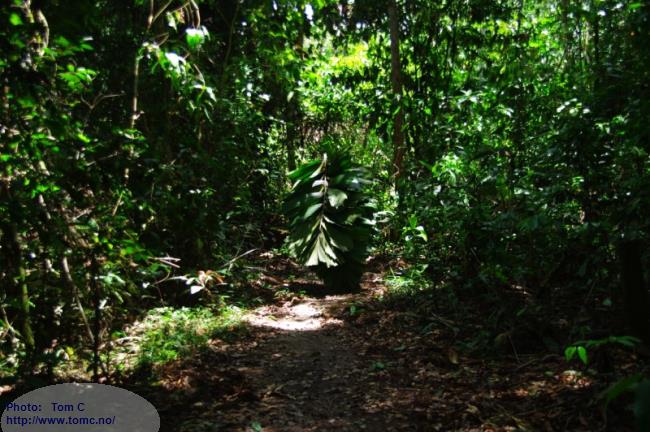
We then said "Thank you" and "Goodbye" to the Landowner and his family
(and gave him some money and a few cigarettes):
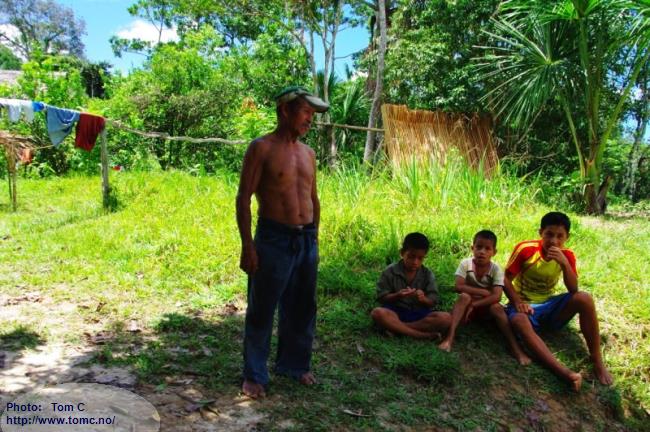
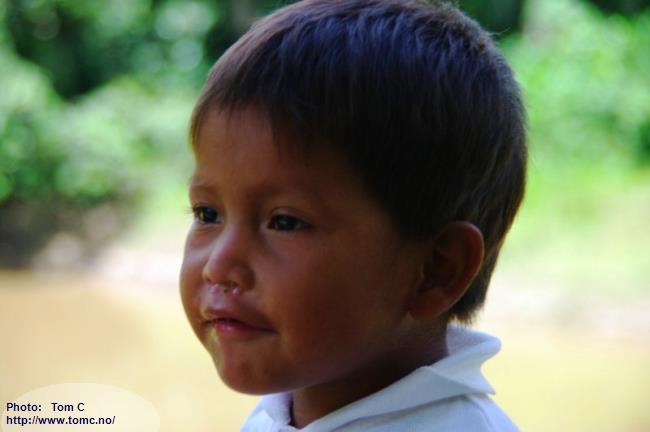
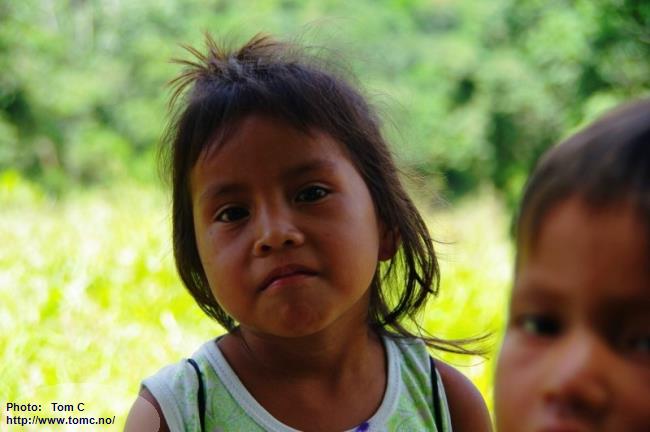
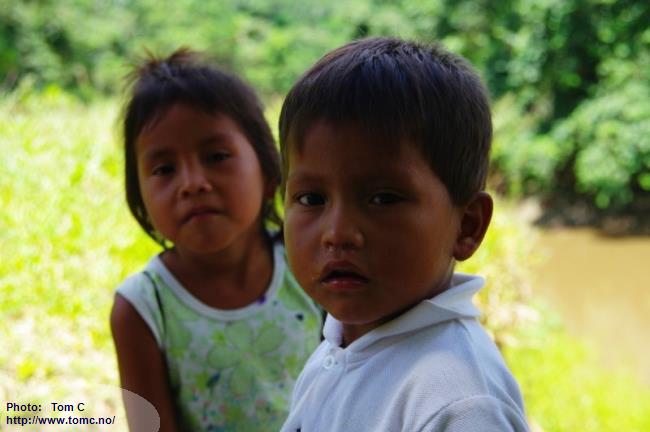
and we then left the area, heading for the town of Tamshiyacu:
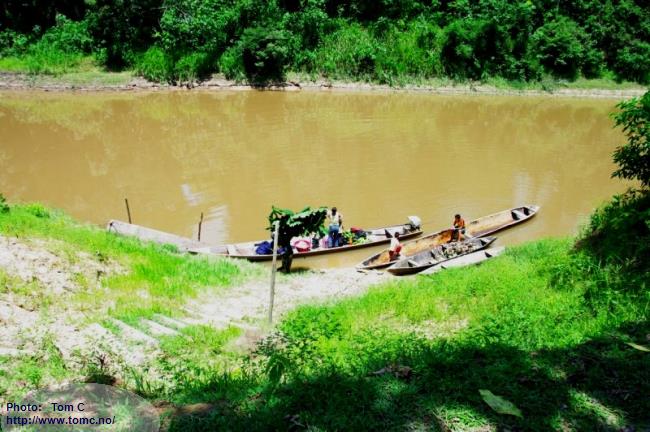
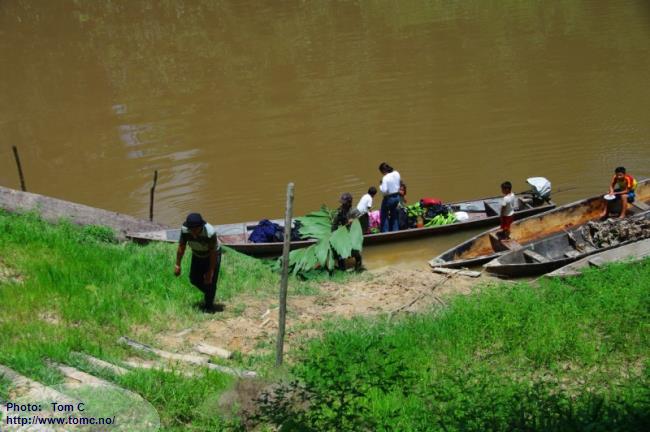
In Tamshiyacu we booked seats in a "rapido" (fast boat) to Iquitos, and we arrived Iquitos
late the same evening, on Monday 3. October 2011.
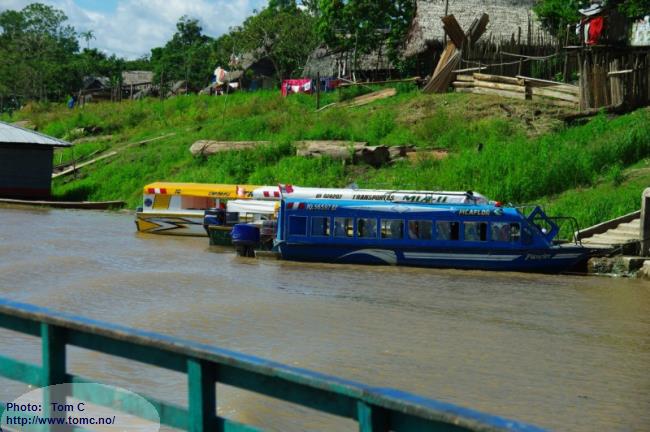
Every fisherman, and most of the locals, in the areas we visited on this expedition, were asked if they knew
or had heard or seen anything about the
Apistogramma panduro form with the red marking in the posterior
part of the dorsal fin ("A 185").
None of them, absolutely none, had ever seen it or had any information about it.
This led me to the preliminary conclusion that there very unlikely exists a specific location where the "A 185"
lives. Most likely just a few fish develop the red marking in the dorsal fin......
but I will of course continue to investigate this phenomenon, and I will not stop until I at least find a
person who has seen it, or better: find a live specimen of the "A 185"!
The next day I was planning the next expedition: To find and collect the
Apistogramma nijsseni in the
Jenaro Herrera area (Río Ucayali-drainage), and to document it's habitat.........but that is another story.......
TomC